FAQ - Advanced Bathroom Queries
Can Toilets Still Flush Without Power

Are you ready for the unexpected? Electricity failures can occur suddenly, rendering us powerless and isolated from the comforts of today’s technology. However, do not despair, champions of readiness! In this article, we’re going to explore the intriguing universe of how to flush a toilet when there’s no power.
Yes, you heard that right. We’ll explore the ingenious mechanisms that allow toilets to flush even when the lights go out. So, buckle up and get ready to become toilet flushing experts in the face of power outages!
Key Takeaways
- Gravity-powered toilets rely on gravity to create the necessary pressure for flushing and provide consistent flushing performance.
- Water pressure is crucial for effective flushing, and toilets typically require a minimum water pressure of 20 psi to flush effectively.
- Backup power options, such as battery-powered flush valves or manual flush handles, can maintain water pressure during power outages.
- Alternative flushing methods, like pouring water into the bowl or using a bucket of water, can be used with low water pressure or during power outages.
Understanding the Basics of Toilet Flushing
To understand the basics of toilet flushing, let’s start by exploring how toilets operate during normal times.
Toilet flush mechanisms play a crucial role in this process. When the flush lever is pressed, it lifts a flapper or a valve, allowing water to flow from the tank into the bowl.
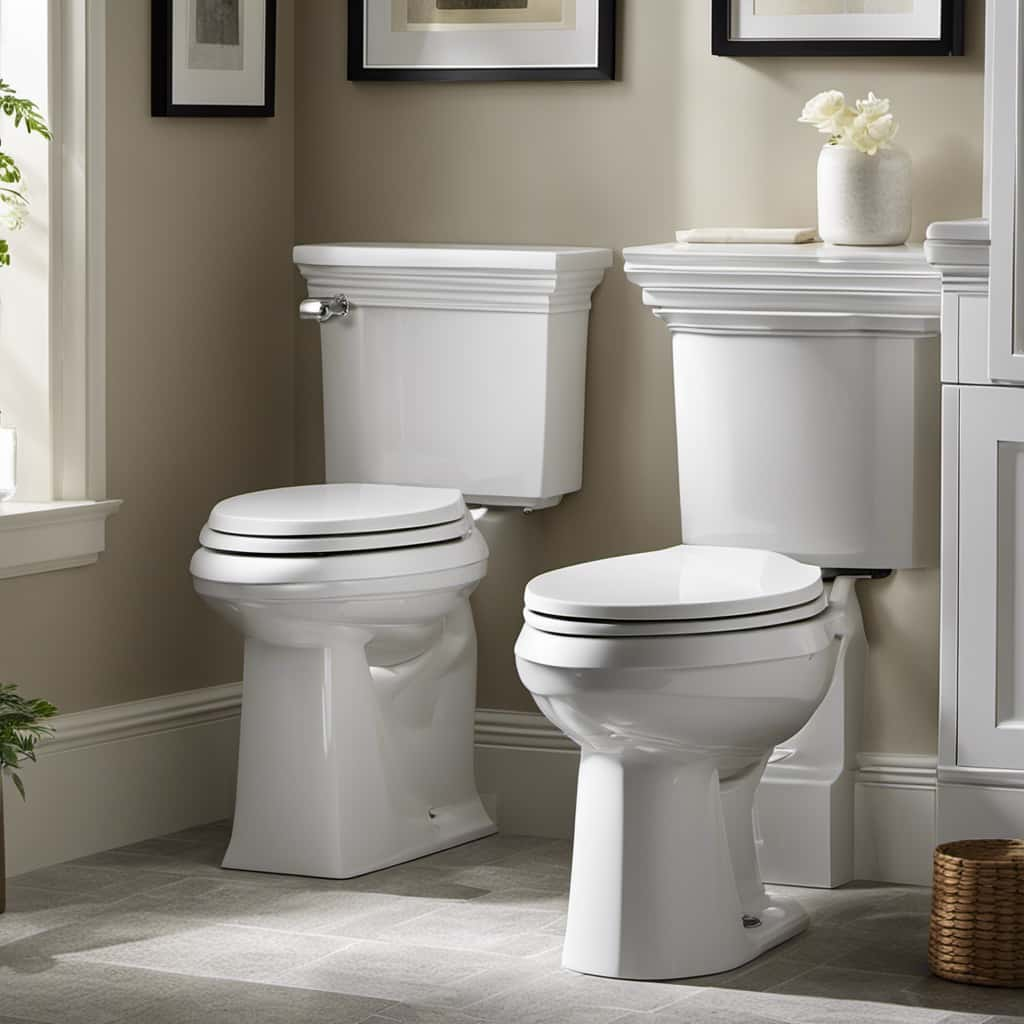
The force of the water creates a siphoning effect, which pulls waste and wastewater from the bowl and into the drain pipe. During this process, the water pressure plays a vital role in ensuring a successful flush.
Adequate water pressure helps to generate the necessary force to remove waste effectively. Insufficient water pressure can result in a weak flush or even a clog. Therefore, maintaining sufficient water pressure is essential for proper toilet flushing.
The Role of Gravity in Flushing
Understanding the basics of toilet flushing, we can further explore the role of gravity in this process. Gravity plays a crucial role in the functioning of gravity-powered toilets, which rely on the force of gravity to create the necessary pressure for flushing. This simple yet effective mechanism allows for efficient and reliable flushing without the need for power or complex machinery.
To better understand the benefits of gravity in toilet flushing, let’s take a look at the following table:
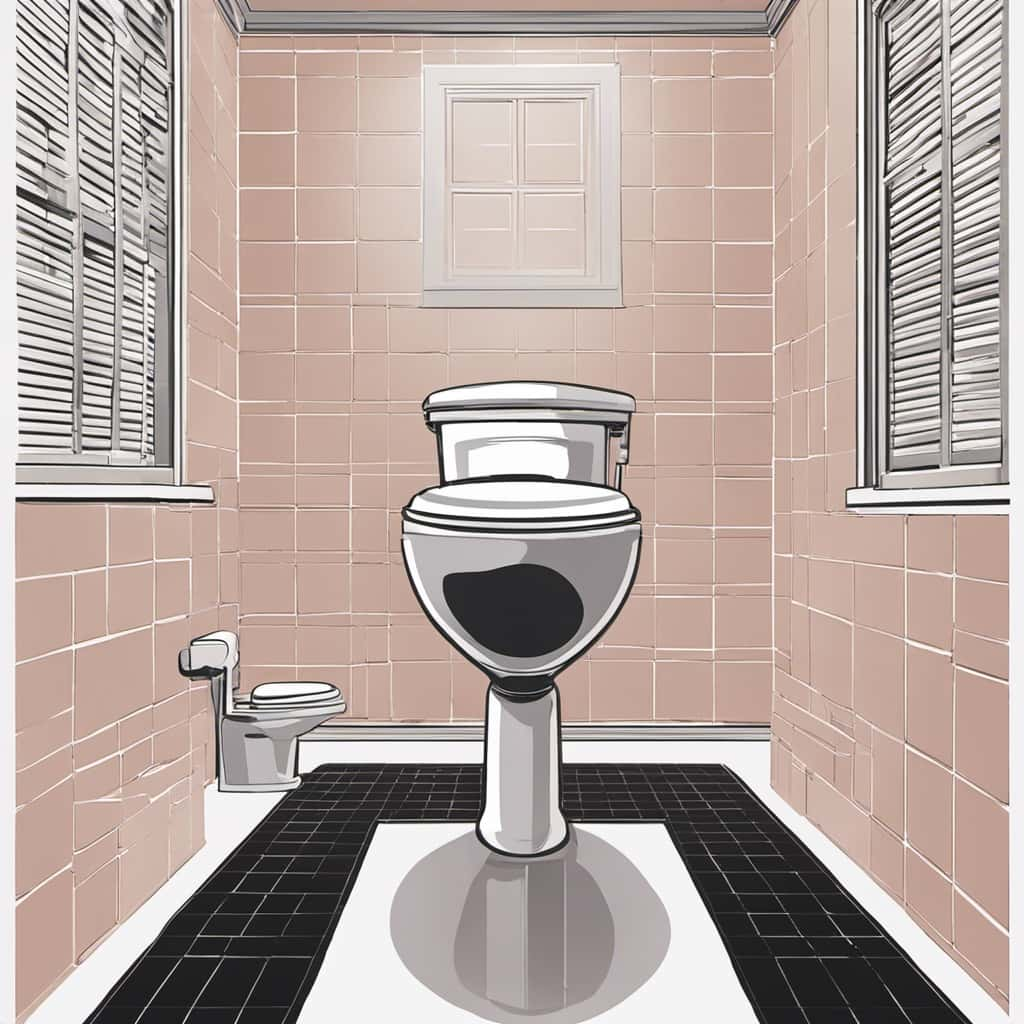
| Benefit | Explanation |
|---|---|
| 1. Consistency | Gravity-powered toilets provide consistent flushing performance, ensuring waste is effectively removed each time. |
| 2. Reliability | As gravity is a constant force, these toilets are less prone to mechanical failures and power outages, making them highly reliable. |
| 3. Efficiency | Gravity-powered toilets require less water for flushing, making them more environmentally friendly and cost-effective. |
How Toilets Rely on Water Pressure
When it comes to flushing toilets, water pressure plays a crucial role. Toilets require a certain level of water pressure to effectively flush waste down the drain. Without sufficient water pressure, the flushing mechanism may not function properly, resulting in an incomplete or weak flush.
Backup power options can help maintain water pressure during power outages, ensuring toilets can still flush even without electricity.
Additionally, some toilets are designed with gravity-assisted flushing mechanisms, which rely on the force of gravity to create the necessary pressure for flushing.
Water Pressure Requirements
We rely on water pressure to ensure that toilets can still flush without power. Water pressure maintenance is crucial for the proper functioning of toilets. When there’s no power, gravity-based flushing systems are inactive, and water pressure becomes the key factor in removing waste.
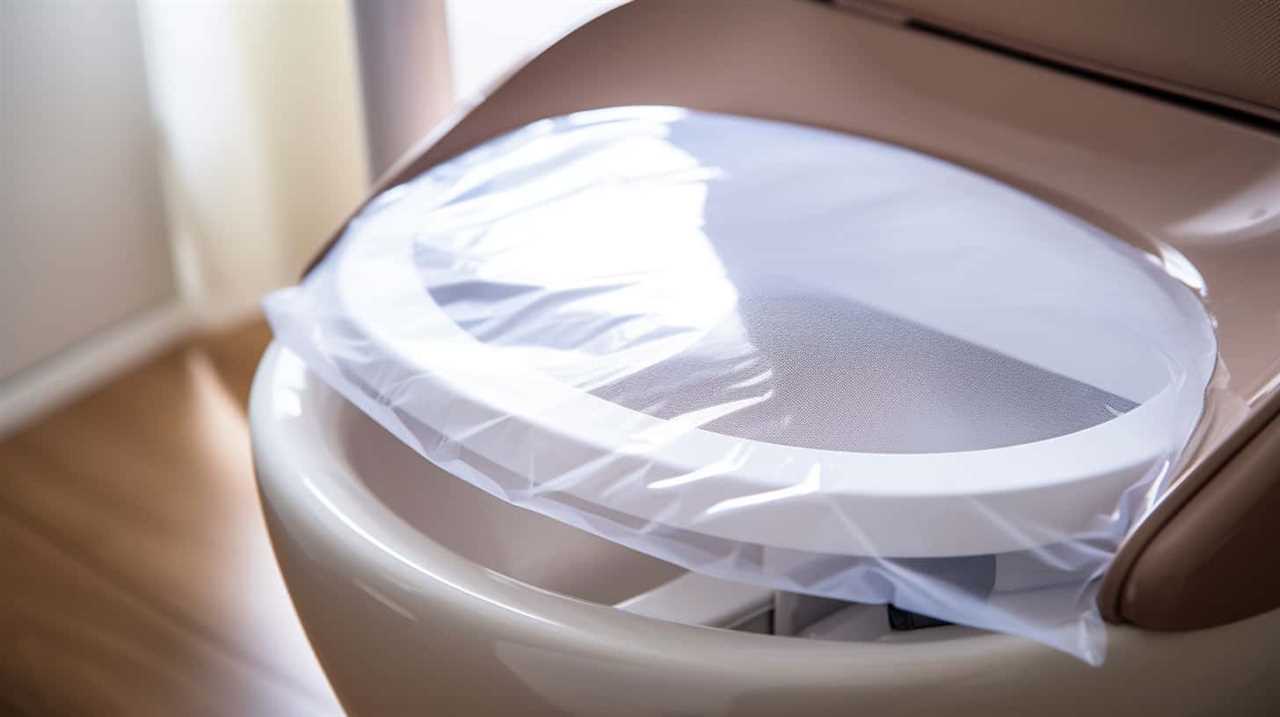
Toilets typically require a minimum water pressure of 20 pounds per square inch (psi) to flush effectively. If water pressure drops below this threshold, alternative flushing methods may be necessary. One such method is the use of a bucket of water poured directly into the toilet bowl, which creates enough force to initiate a flush.
Another option is using a manual pump, which pressurizes water to provide the necessary force for flushing. Understanding the water pressure requirements and alternative flushing methods is essential in ensuring that toilets can still flush without power.
Backup Power Options
To ensure toilets can still flush without power, we rely on backup power options that maintain water pressure. These backup power sources provide the necessary force to push water through the plumbing system and enable the flushing mechanism to work properly.
Here are four alternative flushing methods that can be used when the main power source is unavailable:
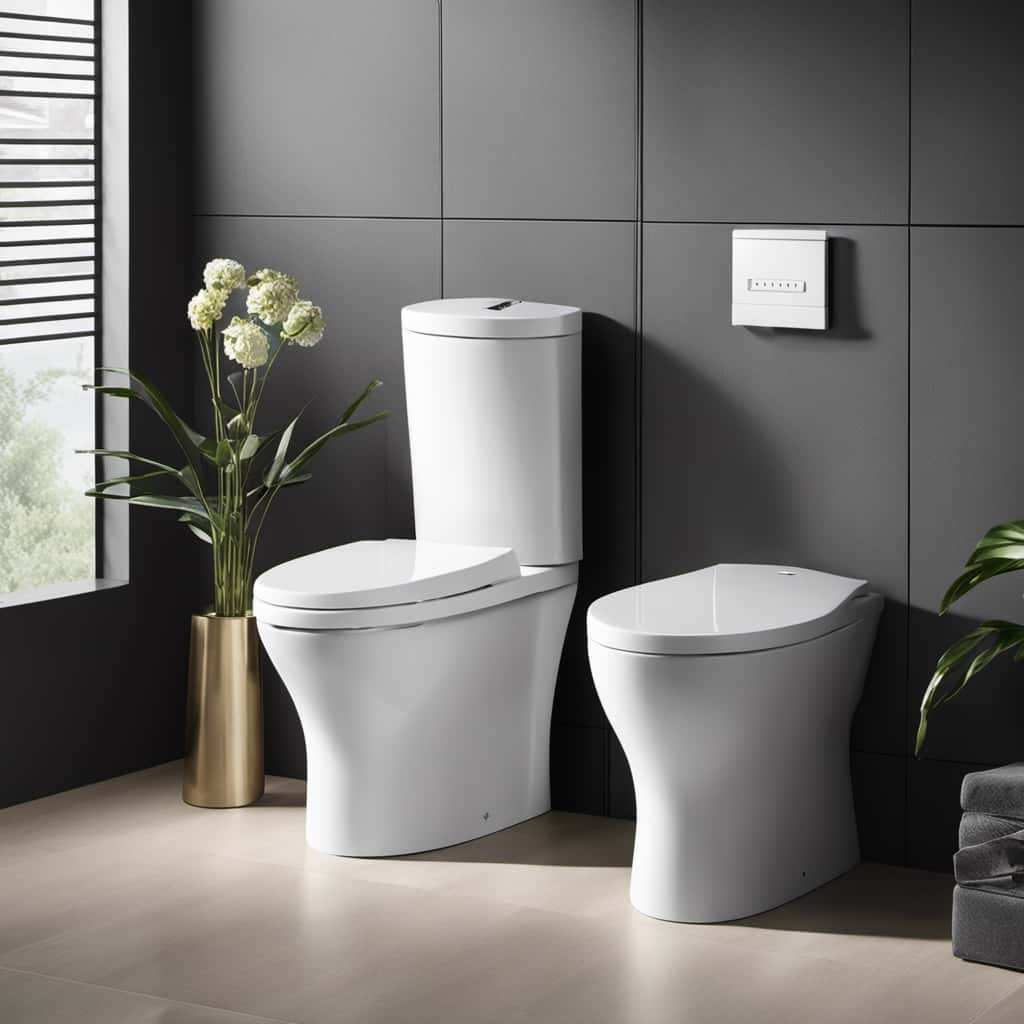
- Battery-powered flush valves: These valves use stored electrical energy to activate the flushing mechanism and maintain water pressure.
- Manual flush handles: In the absence of power, manual flush handles can be used to manually release stored water and create the necessary pressure for flushing.
- Water tank gravity-assisted flushing: This method relies on the force of gravity to generate water pressure. When the tank is filled, gravity causes the water to flow down into the bowl, creating enough pressure to flush.
- Compressed air flushing systems: These systems use compressed air to create pressure and force the water through the plumbing system, ensuring effective flushing even without power.
Now, let’s explore the next section about gravity-assisted flushing mechanisms.
Gravity-Assisted Flushing Mechanisms
Toilets rely on water pressure through gravity-assisted flushing mechanisms to ensure effective flushing. These mechanisms utilize the force of gravity to create a powerful flush, without the need for any external power source. By harnessing the pressure created by water stored in the tank, toilets can efficiently remove waste from the bowl.
In fact, there are water-saving alternatives and alternative flush mechanisms available that further optimize this process. These innovations allow toilets to use less water while still maintaining a strong flush. For example, dual-flush toilets offer two flushing options – a light flush for liquid waste and a more powerful flush for solid waste. This not only saves water, but also reduces the strain on the plumbing system.
Here is a table showcasing some popular alternative flush mechanisms:
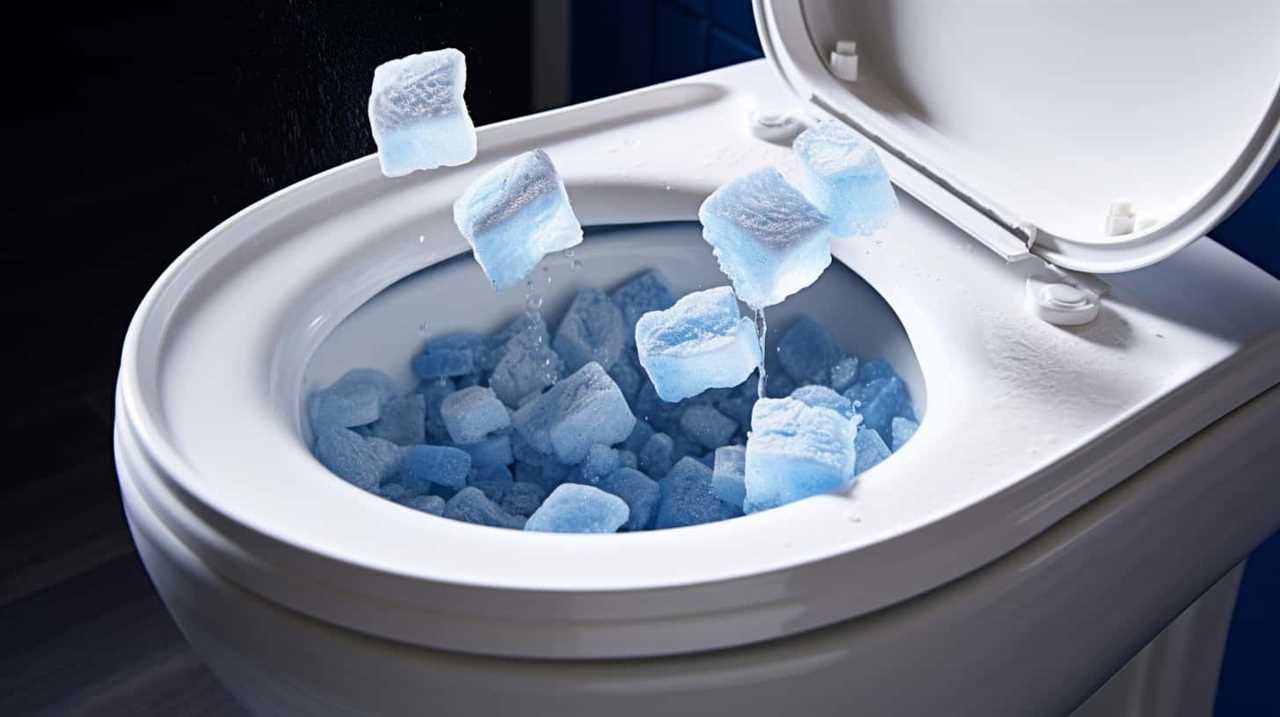
| Flush Mechanism | Description | Benefits |
|---|---|---|
| Dual-flush | Offers two flushing options: light and powerful flush | Water-saving, reduces strain on plumbing |
| Pressure-assisted | Uses compressed air to enhance flushing power | Efficient waste removal, minimal clogs |
| Vacuum-assisted | Creates suction to remove waste | Quiet operation, reduces water consumption |
These innovative flush mechanisms demonstrate how toilets continue to evolve to meet the demands of water conservation and efficiency.
Traditional Flush Toilets and Their Mechanisms
Now let’s explore the inner workings of traditional flush toilets and how they function without electricity. Understanding the mechanism behind flushing helps us grasp how toilets can operate even when power is unavailable.
Additionally, we’ll discuss alternative options that can serve as backups for toilet functionality in emergency situations.
Flushing Without Electricity
Without electricity, we can still flush toilets using the traditional mechanisms that rely on gravity and water pressure. Here are four alternative solutions for flushing without power:
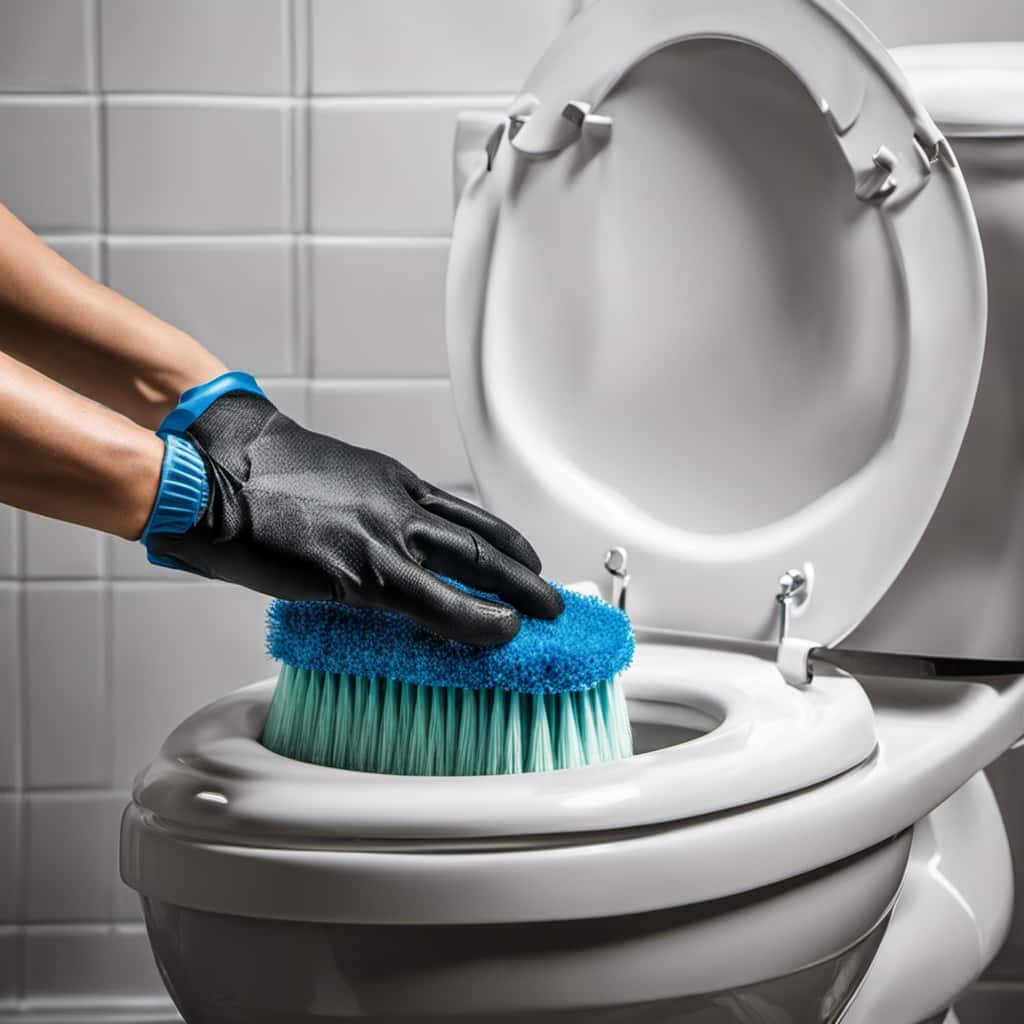
- Tank gravity flush: This mechanism consists of a water tank positioned above the toilet bowl. When the flush lever is activated, the water is released from the tank, creating a force that pushes waste down the drain.
- Siphon jet flush: In this mechanism, water is sent through small jet holes located under the rim of the toilet bowl. The force of the water creates a siphoning effect, pulling waste down the drain.
- Pressure-assisted flush: This system utilizes air pressure to push water into the bowl with greater force, resulting in a more powerful flush.
- Double cyclone flush: This innovative mechanism uses two water jets to create a swirling motion, effectively removing waste with less water.
Toilet Mechanism Explained
As we delve into the topic of toilet mechanisms, it’s important to understand how traditional flush toilets operate and the mechanisms that allow them to function effectively.
Traditional flush toilets rely on a simple yet effective flushing mechanism that uses the force of water to remove waste from the bowl. When the flush lever is pressed, a chain or rod connected to a flapper valve lifts the valve, allowing water to flow from the tank into the bowl. This sudden rush of water creates a surge of pressure that pushes waste down the drain.
To ensure proper flushing, adequate water pressure is required. Insufficient water pressure can result in incomplete waste removal and clogging issues.
Now that we’ve explored the toilet flushing mechanism and its water pressure requirements, let’s move on to discussing backup options for toilets.
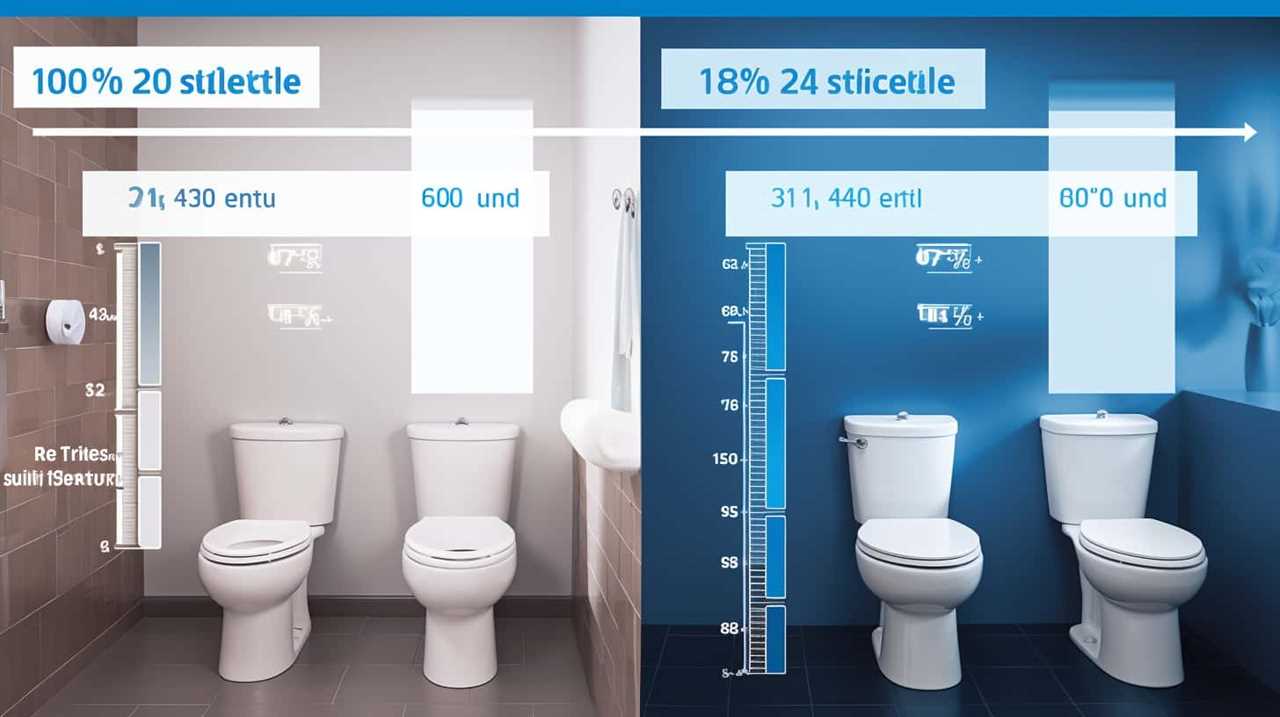
Backup Options for Toilets
In an emergency situation, we can rely on traditional flush toilets to still function using backup options. Here are four backup options for toilets that can help maintain sanitation during a power outage:
- Gravity flush system: Traditional flush toilets rely on the force of gravity to remove waste. Even without backup power, water can still be manually poured into the toilet tank, allowing gravity to flush the waste away.
- Bucket flush method: In the absence of running water, a bucket of water can be poured directly into the bowl to create enough force to flush waste down the drain.
- Portable camping toilets: These self-contained units are equipped with a water tank and a waste holding tank. They can be used as a backup option during emergencies when access to traditional flush toilets is limited.
- Composting toilets: These eco-friendly toilets don’t require any water or electricity to function. They use natural processes to break down waste into compost, making them a reliable backup option for emergency preparedness.
Having backup power and emergency preparedness plans in place ensures that toilets can continue to function, promoting hygiene and sanitation even during unforeseen circumstances.
The Impact of Power Loss on Electric Toilets
During a power outage, we may find ourselves wondering about the functioning of electric toilets. The impact of power loss on electric toilets is significant, as these toilets rely on electricity to operate. Without power, the flushing mechanism of electric toilets becomes inoperative, leading to a potential hygiene issue.
It’s essential to have backup power solutions in place to ensure that electric toilets continue to function during power outages. These backup power solutions can include generators, battery backups, or solar-powered systems.
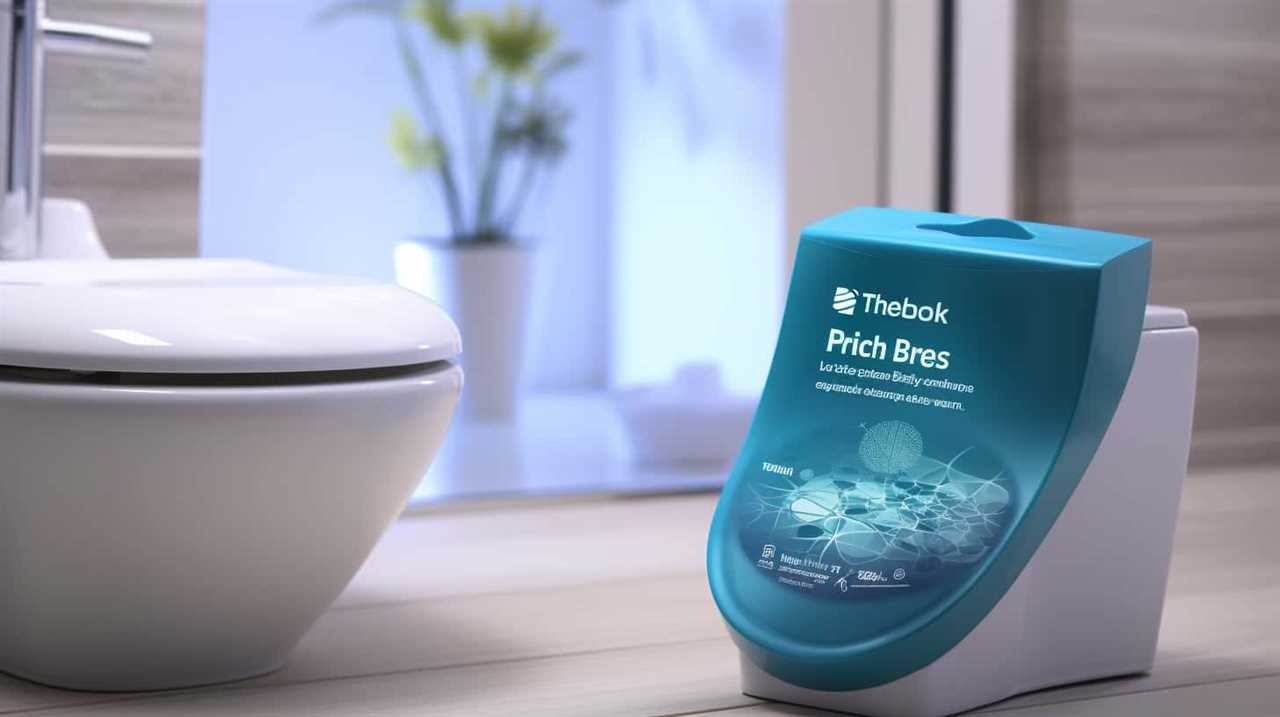
Additionally, alternative flushing methods can be employed when there’s no power available. These methods may include manually filling the toilet tank with water and using a bucket to pour water into the bowl.
It’s important to have a plan in place to address the impact of power loss on electric toilets and ensure the continued functionality of sanitary facilities.
Manual Flushing Options for Power Outages
When faced with a power outage, there are non-electric flush methods that can still be used to maintain proper sanitation. These manual flushing options include filling a bucket with water and pouring it directly into the toilet bowl, or using a manual flush valve if available.
Additionally, water conservation techniques such as reducing the amount of flushing and using alternative sources of water can help prolong the effectiveness of manual flushing during power outages.
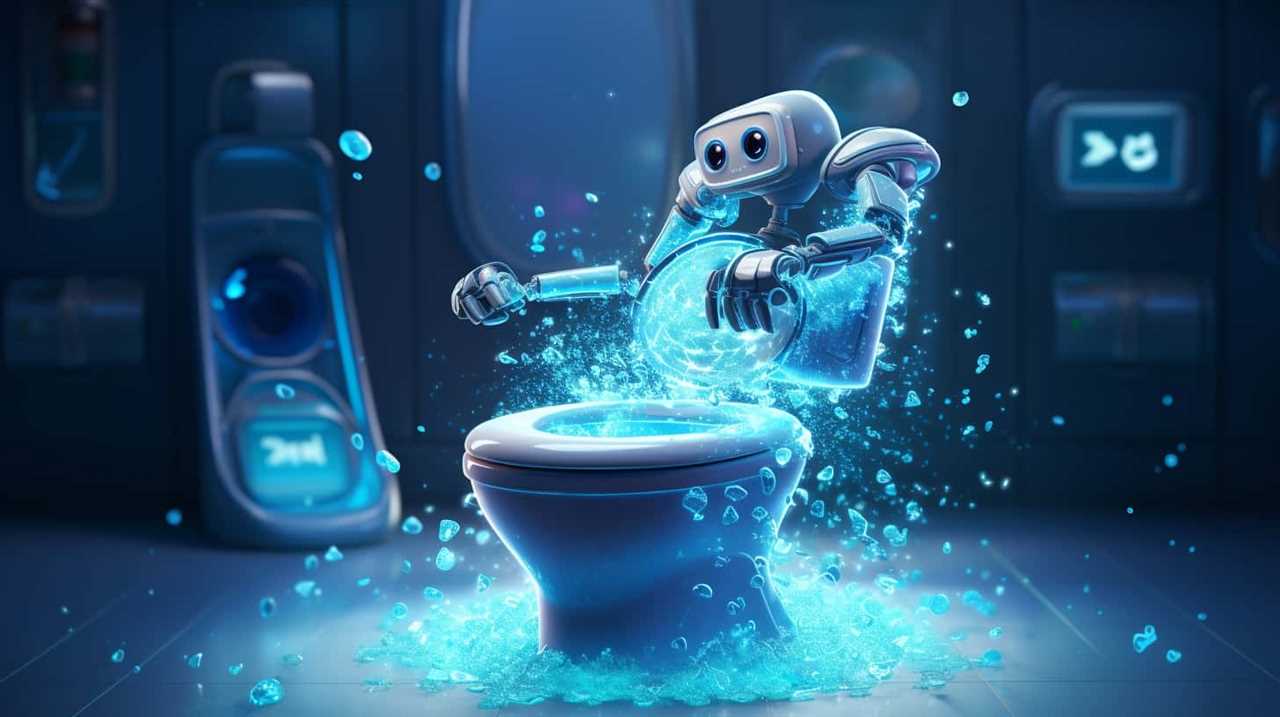
Non-Electric Flush Methods
We frequently rely on non-electric flush methods as our manual flushing options during power outages. These alternative flushing methods not only allow us to maintain basic sanitation but also help us conserve water.
Here are four water-saving techniques that can be used as non-electric flush methods:
- Bucket flush: Fill a bucket with water and pour it directly into the toilet bowl to create enough force to flush waste away.
- Gravity flush: Fill a large container with water and lift it above the toilet tank. Pour the water into the tank, allowing gravity to create the flushing pressure.
- Siphon flush: Use a hose or tube to create a siphon effect, transferring water from a higher container to the toilet bowl.
- Manual flush valve: Install a manual flush valve on the toilet tank, allowing you to manually release water into the bowl by pressing a lever or button.
These non-electric flush methods provide practical solutions for maintaining toilet functionality during power outages while minimizing water usage.
Water Conservation Techniques
Continuing the discussion on water conservation techniques, one effective method for manual flushing during power outages is utilizing a bucket flush. This method involves pouring a bucket of water directly into the toilet bowl to create enough force to flush the waste. It is a simple and practical alternative to traditional flushing methods that require electricity. By using this water-saving technique, you can conserve water and ensure proper sanitation even when there is no power supply. To help you understand the efficiency of bucket flushing, we have provided a table below comparing the water usage of various flushing methods.
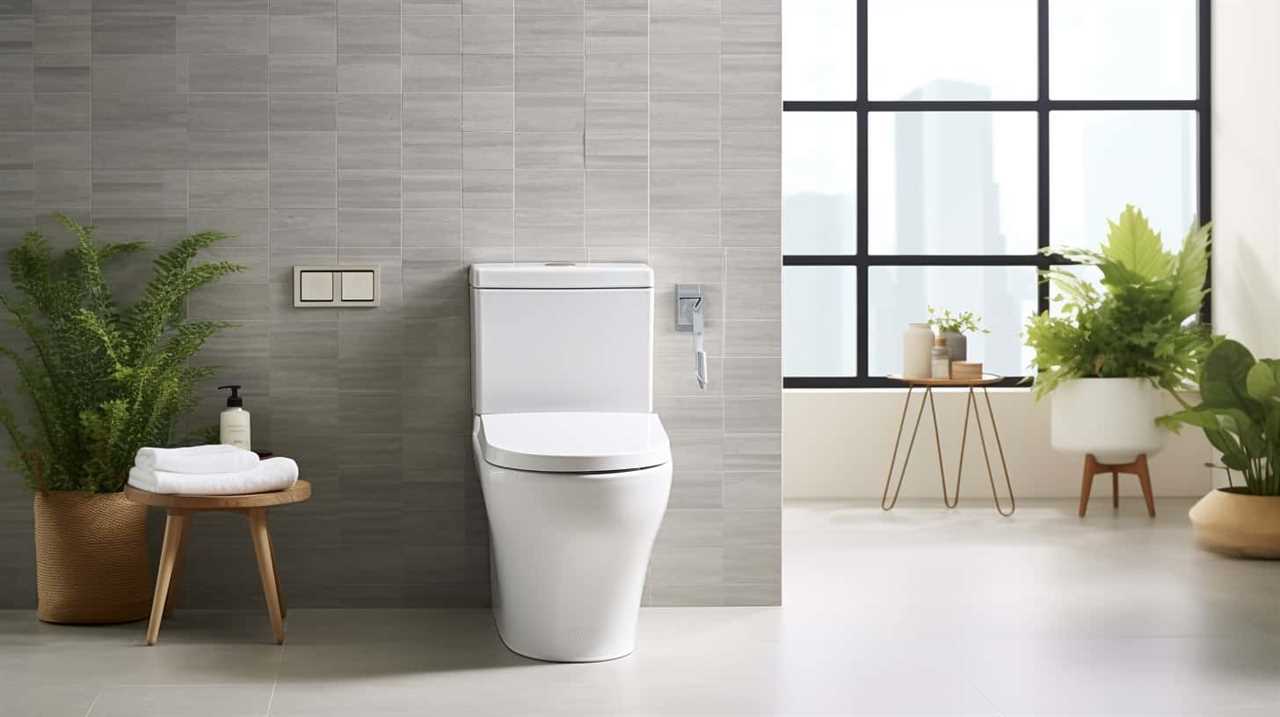
| Flushing Method | Water Usage (gallons) |
|---|---|
| Standard flush | 1.6 |
| Dual flush | 1.1 |
| Bucket flush | 1-2 |
| Gravity flush | 1.28 |
| Composting toilet | 0.2-1.0 |
Using a Bucket or Container to Flush Toilets
If power is lost and toilets can’t flush, one can use a bucket or container as an alternative flushing method. Here are some water-saving techniques that can be employed when using a bucket or container to flush toilets:
- Collecting water: Fill the bucket or container with water from a nearby source such as a rain barrel or a bathtub filled in advance.
- Measuring water: Use a measuring cup or other graduated container to ensure the right amount of water is used for each flush. Typically, 1.6 gallons (6 liters) of water is sufficient.
- Pouring technique: Gently pour the water into the toilet bowl, aiming for the area where waste would normally exit. This helps to create enough force to remove waste effectively.
- Repeat if necessary: If the first flush isn’t successful, repeat the process until the toilet is adequately flushed.
DIY Solutions for Toilet Flushing During Blackouts
To continue the discussion on using DIY solutions for toilet flushing during blackouts, let’s explore some practical methods that can be employed.
When faced with a power outage, it’s essential to have emergency solutions in place to ensure proper sanitation.
One DIY hack involves using a gravity-fed system, which utilizes stored water to create flushing pressure. By elevating a container of water and attaching a hose or pipe to the toilet tank’s intake valve, water can be directed into the tank, allowing for flushing.
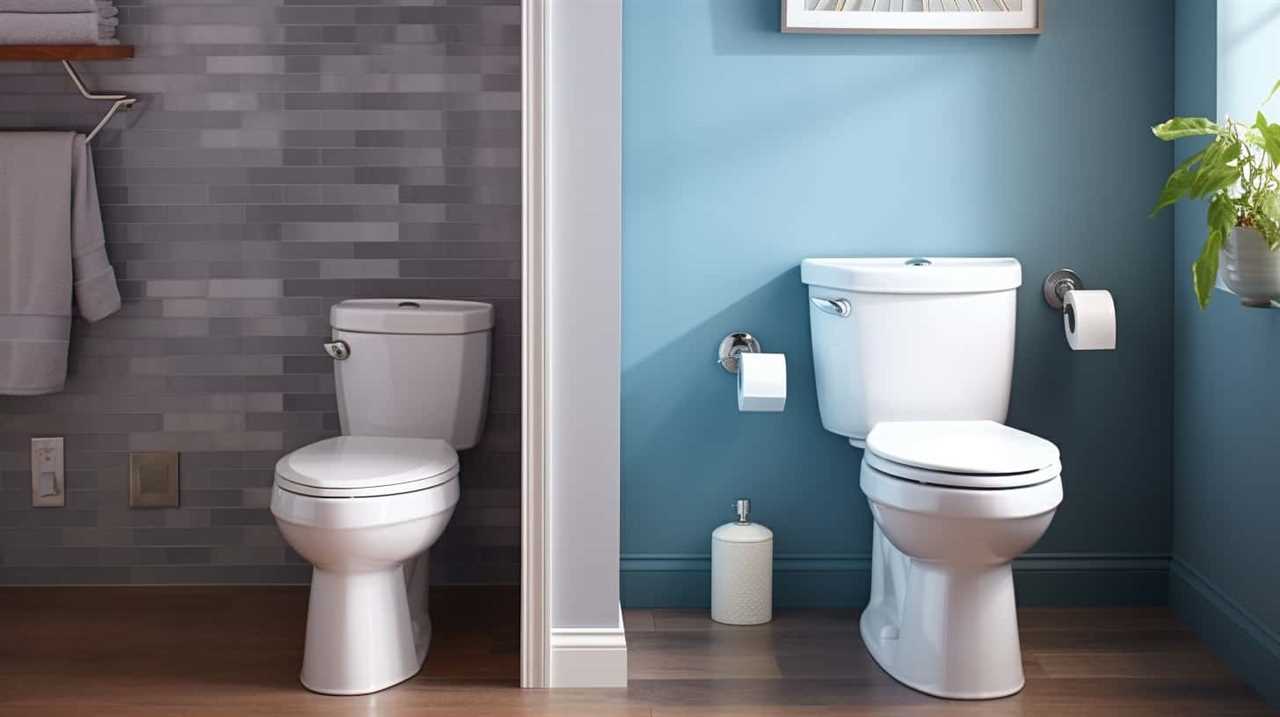
Another option is to repurpose a hand-operated bilge pump commonly used in boats. By attaching the pump to the toilet’s water supply line, manual flushing can be achieved.
These DIY solutions offer a reliable and efficient way to maintain toilet functionality during blackouts, providing peace of mind in emergency situations.
Backup Systems for Toilet Flushing Without Power
We can explore backup systems for toilet flushing without power. When faced with a power outage, it’s important to have alternative methods to keep our toilets functional. Here are four backup systems that can be used:
- Gravity-Based Systems: These systems utilize the force of gravity to create a flush. By pouring a large bucket of water into the toilet bowl, the water will flow down and create a flushing action.
- Water Storage Tanks: Installing a water storage tank allows you to have a reserve of water for flushing toilets. When the power goes out, you can use the stored water to manually flush the toilets.
- Dual-Flush Toilets: These toilets have two flushing options – one for liquid waste and another for solid waste. By using the lower flush volume option during a power outage, you can conserve water and still flush the toilet.
- Composting Toilets: These toilets don’t rely on water for flushing. They use natural processes to break down waste into compost. Composting toilets are a sustainable and efficient alternative for toilet flushing during power outages.
Preparing Your Toilet for Emergencies
Continuing the discussion on backup systems for toilet flushing without power, let’s now focus on preparing our toilets for emergencies. When it comes to non-electric sanitation options, it is essential to have the necessary emergency toilet supplies on hand. To help you better understand what items are needed, we have provided a table below:
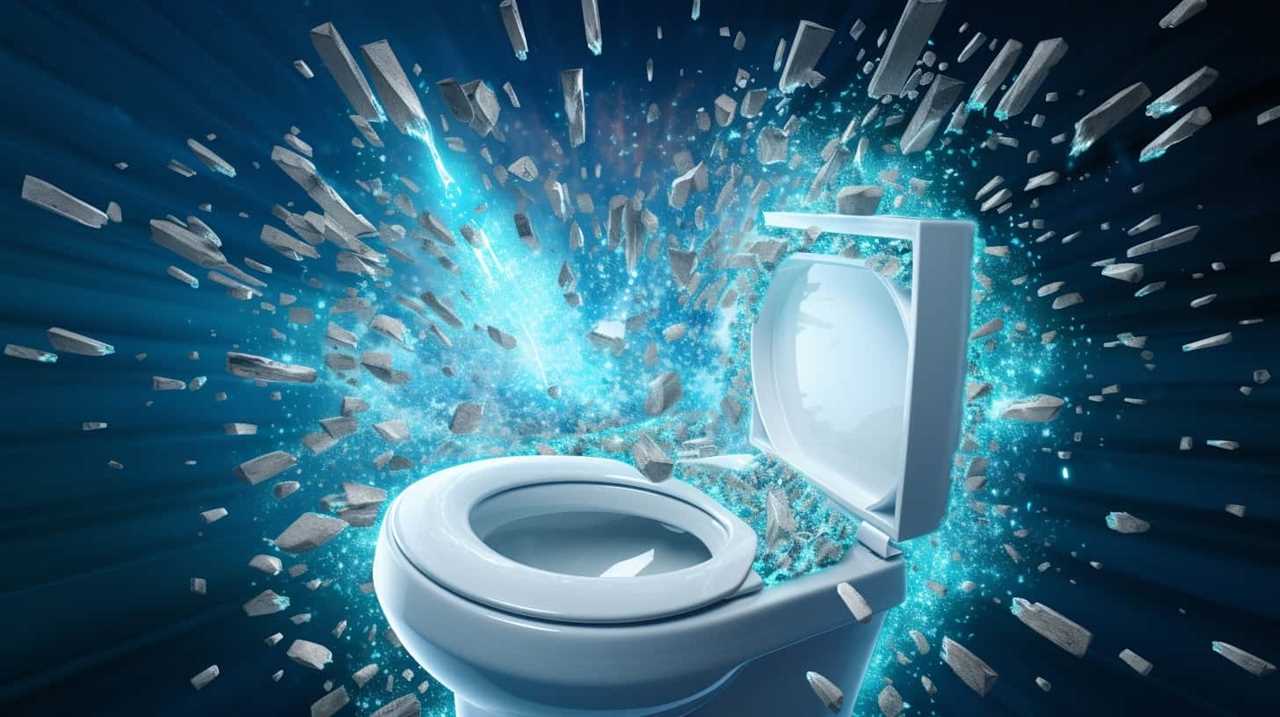
| Emergency Toilet Supplies |
|---|
| Toilet paper |
| Hand sanitizer |
| Garbage bags |
| Disposable gloves |
| Disinfectant wipes |
Conclusion: Ensuring Functionality When the Lights Go Out
In ensuring functionality when the lights go out, our priority is to maintain efficiency and effectiveness in toilet flushing. Here are some key considerations for ensuring that your toilet can still flush without power:
- Gravity Assisted Flushing Techniques:
Gravity remains the most reliable force for flushing toilets. Ensure that your toilet has a proper trap and a sufficient water supply to facilitate gravity-assisted flushing. - Alternative Flushing Methods:
In the absence of power, consider alternative flushing methods such as using a bucket of water or a portable water source to manually flush the toilet. This can help maintain basic sanitation even without access to electricity. - Regular Maintenance:
Regularly inspect and maintain your toilet to prevent clogs and blockages. This includes checking the trap, cleaning the bowl, and ensuring the flushing mechanism is in good working condition. - Emergency Preparedness:
Have a backup plan in place for emergencies. Consider investing in a portable toilet or keeping a supply of biodegradable bags for waste disposal in case the toilet becomes inoperable.
Conclusion
In conclusion, when the power goes out, toilets can still flush thanks to the power of gravity and water pressure. Just like a well-oiled machine, toilets rely on these forces to do their job effectively.
Much like a river flowing effortlessly downstream, toilets effortlessly remove waste from our homes.
So, even in the darkest of times, rest assured that your toilet will continue to function and keep things flowing smoothly.
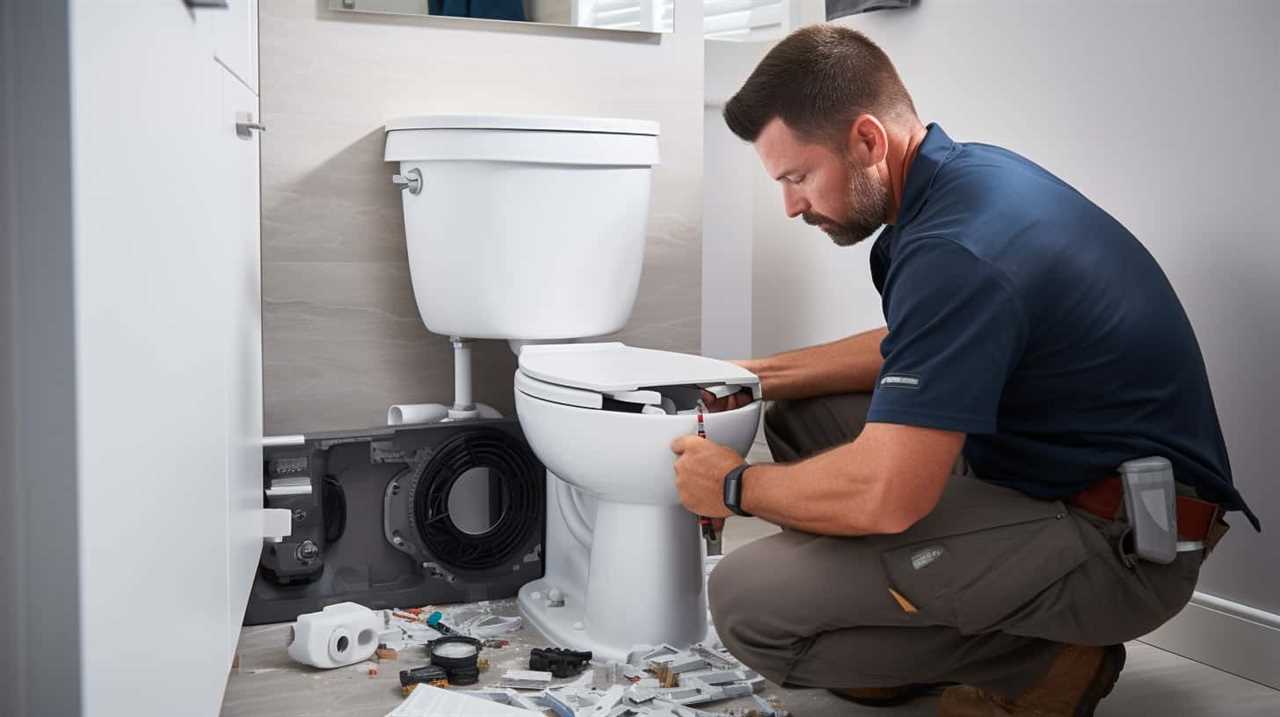
With an impeccable eye for detail and a passion for bathroom-related, Ava leads our editorial team gracefully and precisely.
Under her guidance, Best Modern Toilet has flourished as the go-to resource for modern bathroom enthusiasts. In her free time, you might find Ava exploring antique shops and looking for vintage bathroom fixtures to add to her collection.
FAQ - Advanced Bathroom Queries
Can I Flush Bed Bugs Down the Toilet

Can you flush bed bugs down the toilet?
Well, let’s dive into the world of bed bugs and explore this myth together.
In this article, we will unravel the behavior of these pesky critters and discuss the potential risks and limitations of flushing as a solution.
Fear not, for we will also explore alternative methods for eliminating bed bugs.
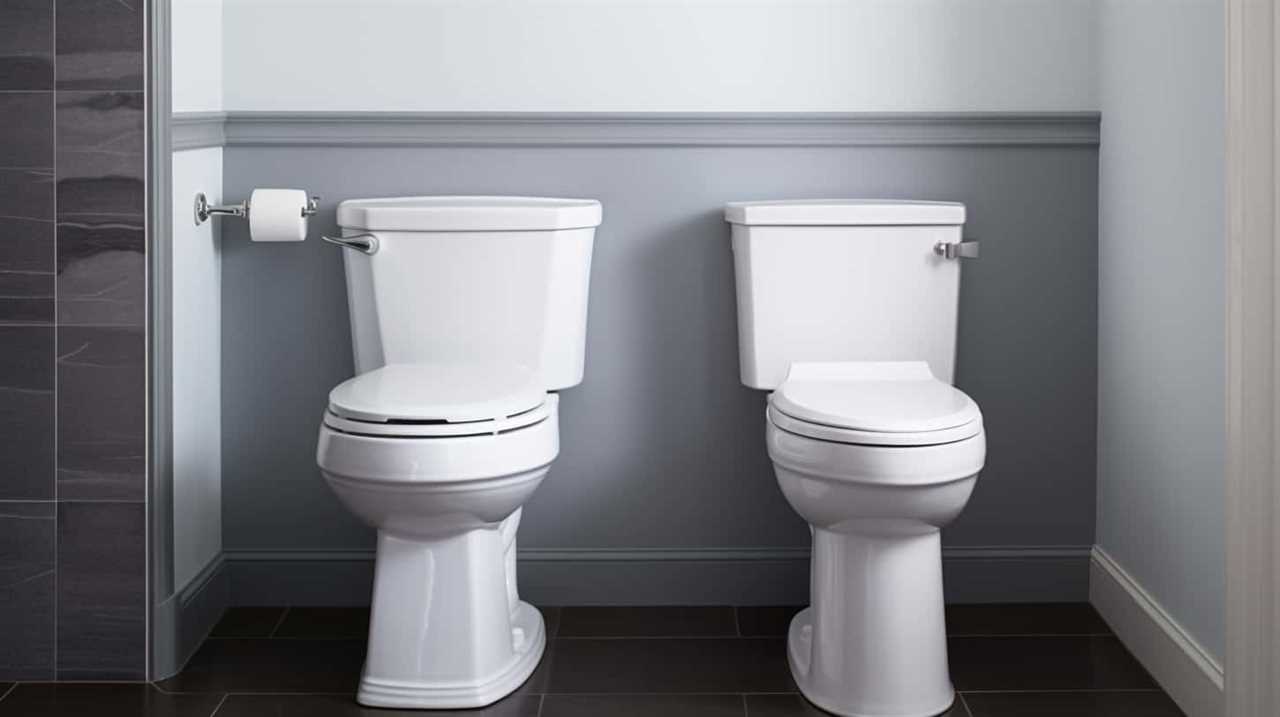
Get ready to master the art of dealing with these unwelcome guests!
Key Takeaways
- Flushing bed bugs down the toilet is ineffective for eradication.
- Bed bugs can survive in water and can swim short distances.
- Flushing may cause bed bugs to scatter and infest other areas of the home.
- Prevention and detection methods, such as regular inspection and the use of mattress encasements and insecticides, are more reliable strategies.
The Myth of Flushing Bed Bugs
One common misconception that we need to address is the myth that we can flush bed bugs down the toilet. While it may seem like a convenient solution, it’s important to understand that flushing bed bugs down the toilet isn’t an effective method of eradication.
Bed bugs have a remarkable ability to survive in various environments, including water. They can withstand submersion and can even swim for short distances. Flushing them down the toilet won’t eliminate an infestation nor prevent future occurrences.
To effectively control bed bug infestations, it’s crucial to focus on prevention and detection methods. Regular inspection of bedding, furniture, and cracks in walls, as well as the use of mattress encasements and insecticides, are more reliable strategies to combat these pests.
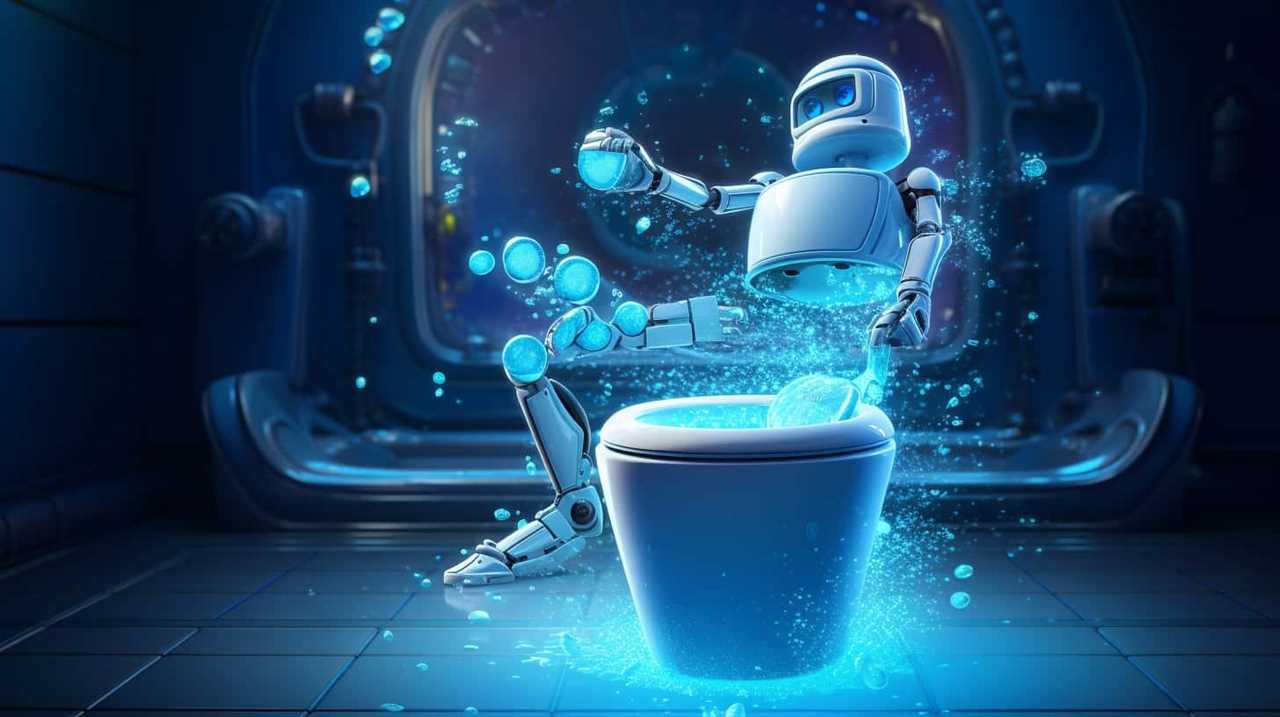
Understanding the Behavior of Bed Bugs
To truly understand the behavior of bed bugs, we must delve into their habits and preferences. Bed bugs, scientifically known as Cimex lectularius, are nocturnal insects that feed on the blood of humans and animals. They’re excellent at hiding and can be found in various places within our homes. Understanding their hiding spots is key to effective prevention and control of infestations.
Bed bugs are skilled at hiding in dark, secluded areas near their hosts. They’re commonly found in mattresses, box springs, bed frames, and headboards. These areas provide easy access to their food source during the night. However, they can also hide in other places such as cracks and crevices in walls, furniture, and electrical outlets.
By knowing their preferred hiding spots, we can take proactive measures to prevent bed bug infestations. Regularly inspecting these areas and implementing preventive measures, such as using mattress covers and keeping a clutter-free environment, can help reduce the risk of infestation.
Understanding the behavior and hiding spots of bed bugs is crucial for effective prevention and control. However, it’s also important to be aware of the potential risks associated with flushing bed bugs, which we’ll discuss in the next section.
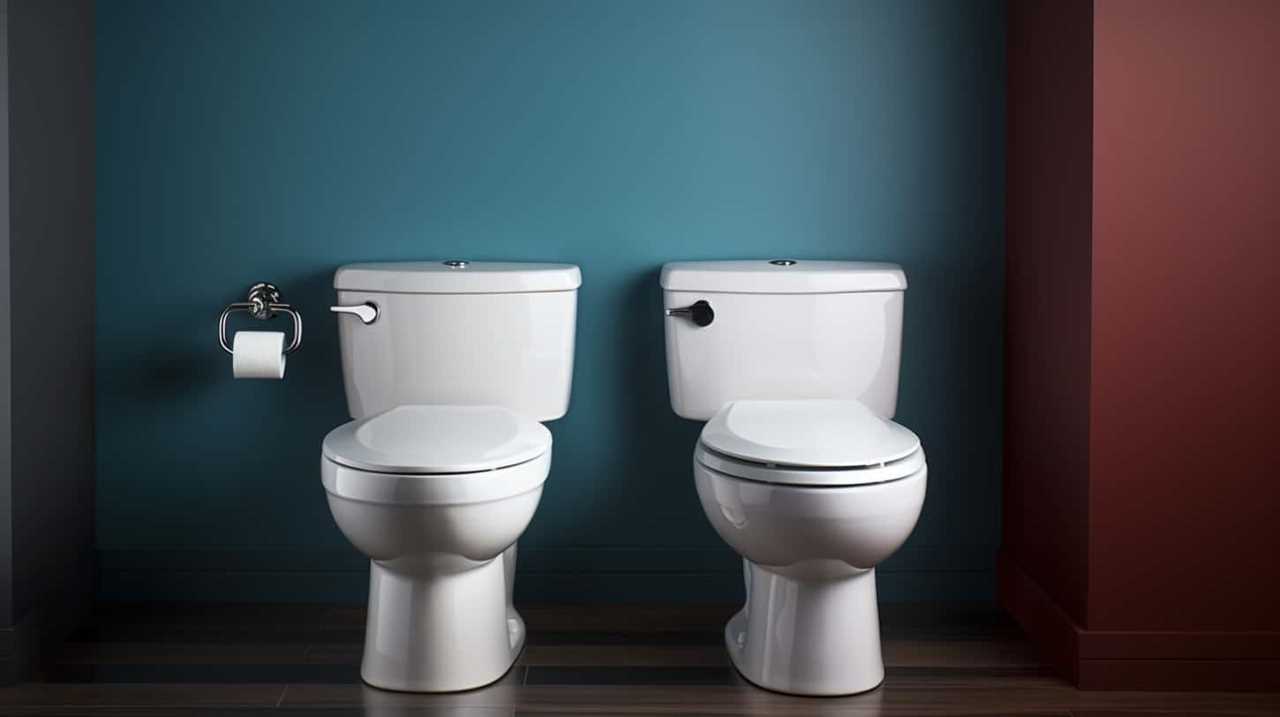
Potential Risks of Flushing Bed Bugs
Now let’s delve into the potential risks of flushing bed bugs down the toilet. While flushing may seem like an easy and convenient solution, it’s important to consider its effectiveness and potential drawbacks. Here are some potential risks to be aware of:
- Survival: Bed bugs are resilient creatures and can survive for extended periods of time without feeding. Flushing them down the toilet may not guarantee their complete elimination.
- Spread: Flushing bed bugs down the toilet can potentially cause them to scatter and infest other areas of your home or building.
- Water resistance: Bed bugs have the ability to cling onto surfaces, including the sides of the toilet bowl. They may be able to resist being flushed down and could crawl back up.
- Clogging: Flushing a large number of bed bugs at once may clog the toilet pipes, leading to plumbing issues.
- Environmental impact: Flushing bed bugs can introduce them into the water system, potentially affecting local ecosystems.
Considering these risks, it’s important to explore other bed bug solutions that may be more effective and less problematic.
Limitations of Flushing as a Bed Bug Solution
Using the toilet to flush bed bugs has several limitations that we need to consider. While it may seem like a convenient and straightforward solution, it’s important to understand the risks and effectiveness associated with this method.
One limitation is that flushing may not effectively eliminate all bed bugs present in your home. Bed bugs are known to hide in various cracks and crevices, making it difficult to completely eradicate them through flushing alone.
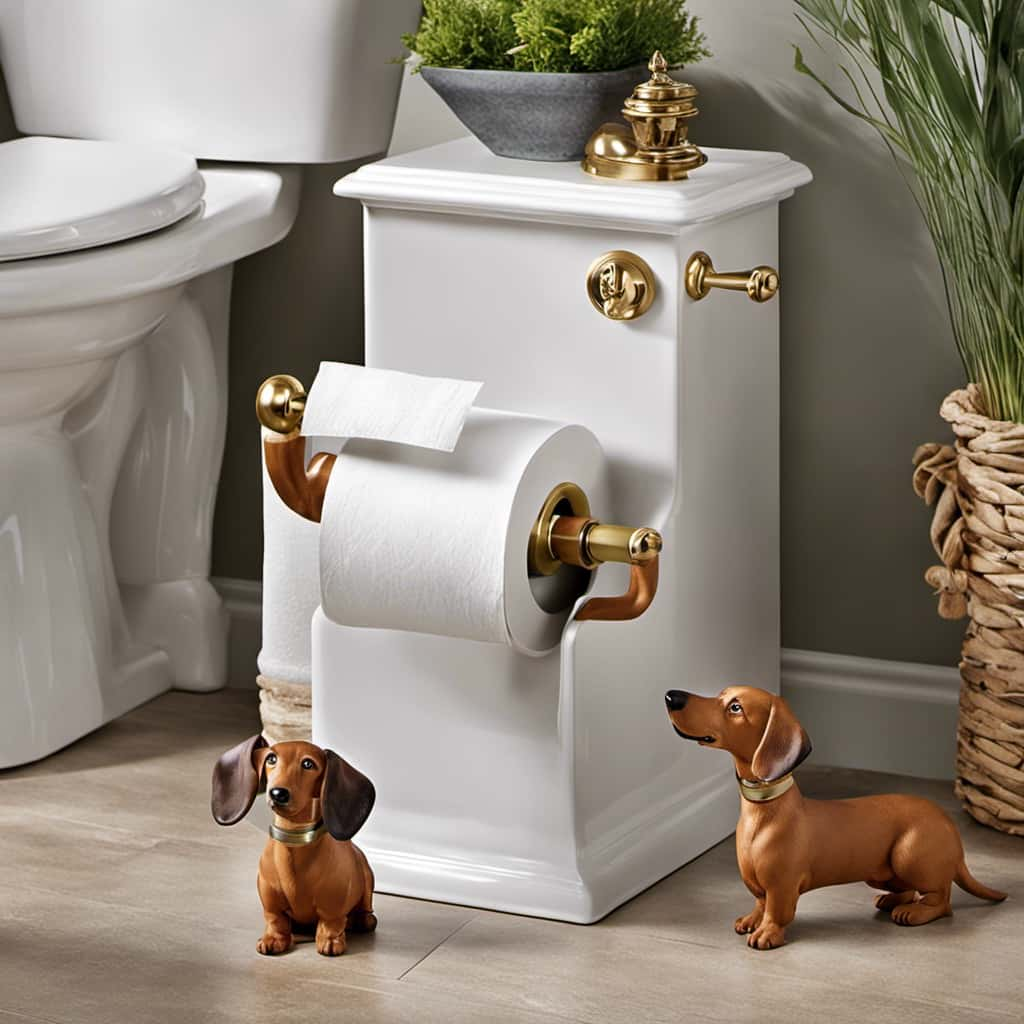
Additionally, flushing may not be a practical solution for larger infestations, as it may require multiple flushes or a significant amount of water.
Furthermore, flushing bed bugs doesn’t address the root cause of the infestation, such as untreated bedding or furniture.
Therefore, while flushing may temporarily reduce the number of bed bugs, it isn’t a comprehensive solution for long-term control and elimination.
Alternative Methods for Eliminating Bed Bugs
While flushing bed bugs down the toilet may not be an effective solution, there are alternative methods we can use to eliminate these pests. Here are five alternative methods for eliminating bed bugs:
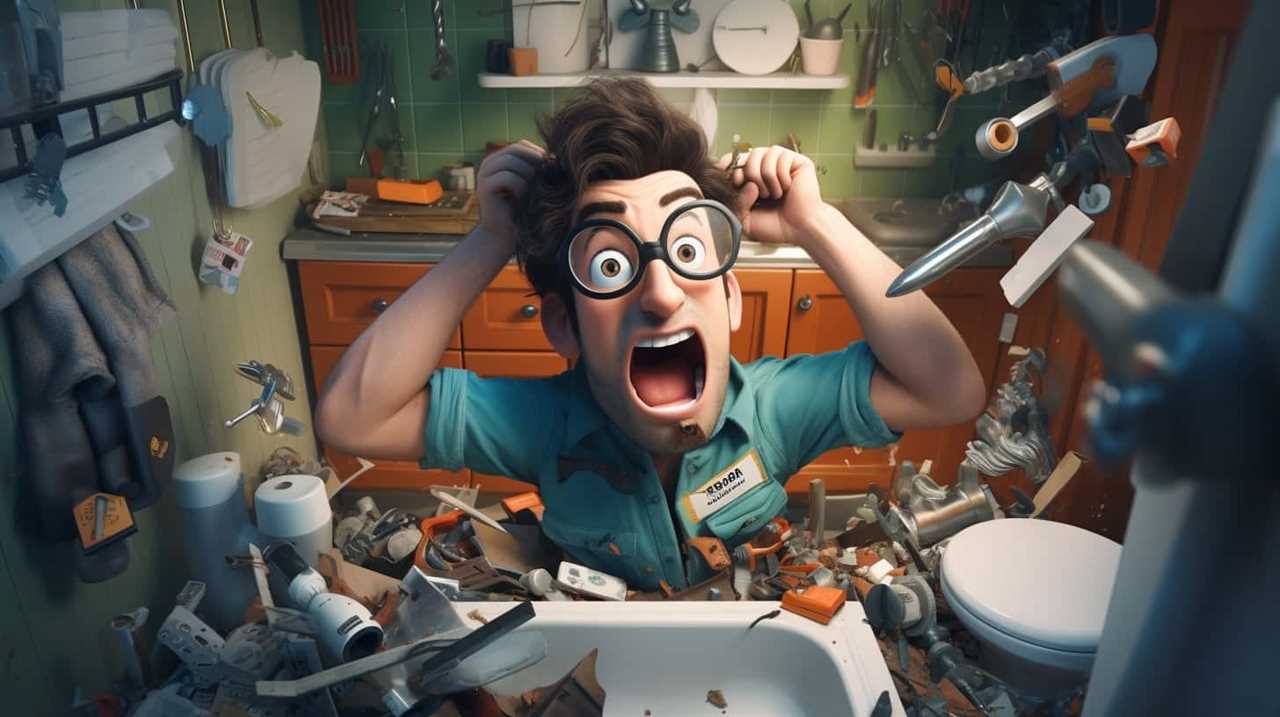
- Natural bed bug repellents: Certain essential oils, such as lavender, tea tree, and peppermint oil, have been found to repel bed bugs. These natural repellents can be used in sprays or diffusers to deter bed bugs from infesting your home.
- Heat treatment for bed bug control: Heat is an effective method for killing bed bugs and their eggs. Using specialized heaters or steamers, you can raise the temperature in infested areas to a level that’s lethal for bed bugs, ensuring complete elimination.
- Vacuuming: Regular vacuuming of infested areas can help remove bed bugs, eggs, and nymphs. Be sure to dispose of the vacuum bag or empty the canister in a sealed plastic bag to prevent reinfestation.
- Encasing mattresses and pillows: Bed bug-proof encasements can be used to trap any bed bugs already infesting your mattress or pillows, preventing them from feeding and eventually killing them.
- Professional pest control: If all else fails, it may be necessary to enlist the help of a professional pest control service. They have the knowledge, experience, and equipment to effectively eliminate bed bugs from your home.
These alternative methods provide effective solutions for eliminating bed bugs without resorting to ineffective methods like flushing them down the toilet.
Frequently Asked Questions
How Long Does It Take for Bed Bugs to Drown in Water?
Drowning bed bugs in water is not an effective method to eliminate an infestation. Bed bugs can survive for several hours in water and may even be able to reemerge after being submerged. There are alternative methods to eliminate bed bugs using water.
Can Bed Bugs Survive in the Plumbing System After Being Flushed Down the Toilet?
Bed bugs are unlikely to survive in the sewage system after being flushed down the toilet. They lack the ability to swim against the water flow and are unlikely to escape and infest the bathroom.
Are Bed Bugs More Likely to Spread to Other Areas of the House if Flushed Down the Toilet?
When flushed, bed bugs are unlikely to spread to other areas of the house. However, it is important to note that flushing them down the toilet is not a foolproof method. Potential risks include clogging, and prevention methods should focus on professional pest control.
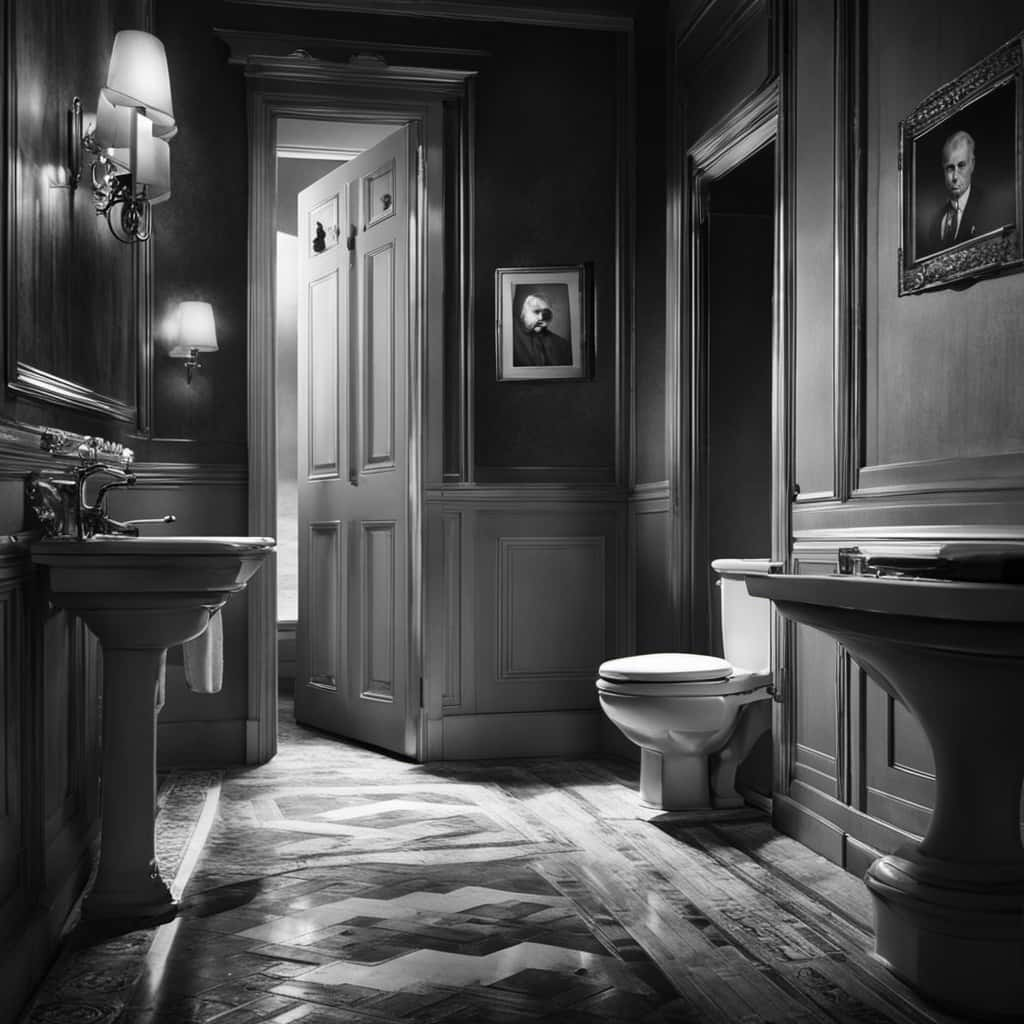
What Are the Potential Health Risks Associated With Flushing Bed Bugs?
Flushing bed bugs down the toilet may seem like an easy solution, but it may not be effective and can pose potential health risks. It’s important to consider other methods for eradication.
Are There Any Legal Restrictions or Regulations Regarding the Disposal of Bed Bugs by Flushing Them Down the Toilet?
There may be legal restrictions or regulations regarding the disposal of bed bugs by flushing them down the toilet. It is important to consider alternative disposal methods to prevent plumbing system survival and potential health risks.
Conclusion
In conclusion, while the idea of flushing bed bugs down the toilet may seem like a convenient solution, it isn’t a reliable method for eliminating these pests. Bed bugs have the ability to survive underwater for extended periods of time and can easily escape through the plumbing system.
Additionally, the potential risks associated with flushing bed bugs, such as clogging pipes and spreading infestations to other areas, outweigh any potential benefits.
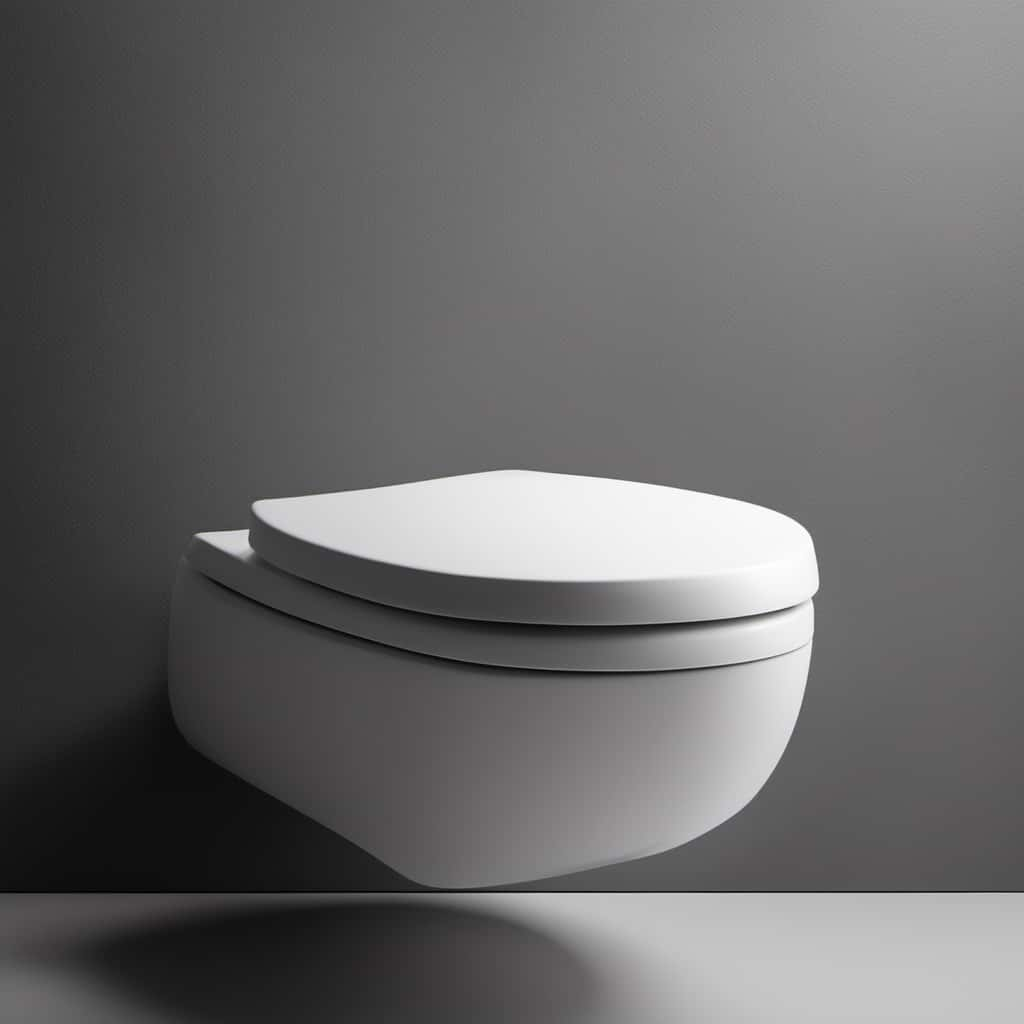
It’s recommended to explore alternative methods for effectively removing bed bugs from your environment.
With an impeccable eye for detail and a passion for bathroom-related, Ava leads our editorial team gracefully and precisely.
Under her guidance, Best Modern Toilet has flourished as the go-to resource for modern bathroom enthusiasts. In her free time, you might find Ava exploring antique shops and looking for vintage bathroom fixtures to add to her collection.
FAQ - Advanced Bathroom Queries
Is It Worth Getting a Dual Flush Toilet

Are you fed up with wasting water and money with your old toilet? Well, we have some exciting news for you. Presenting the dual flush toilet, a revolutionary addition to the world of bathroom fixtures.
With its innovative design, this toilet offers not one, but two flush options, allowing you to conserve water and save on your monthly bills.
In this article, we’ll delve into the benefits, cost savings, ease of use, environmental impact, and maintenance considerations of this modern marvel.
So, sit back, relax, and let’s explore if it’s worth getting a dual flush toilet.
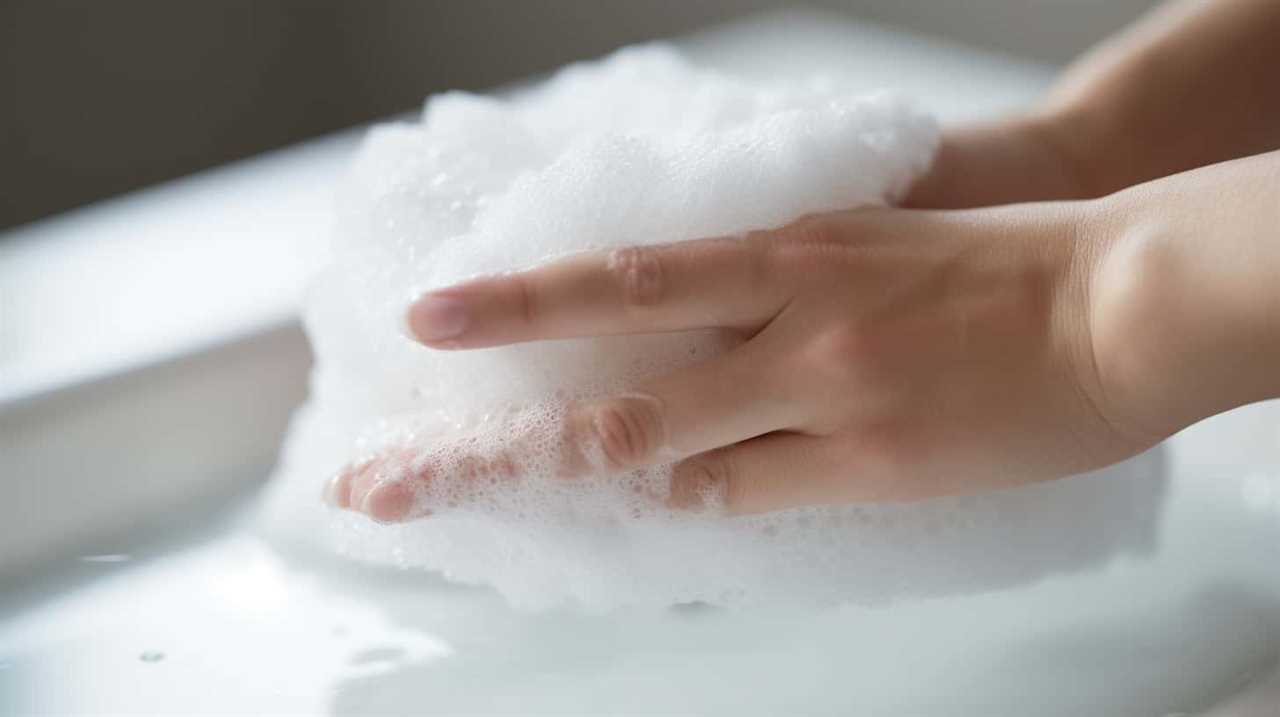
Key Takeaways
- Dual flush toilets offer water conservation benefits, using an average of 1.28 gallons of water per flush compared to traditional toilets.
- They provide cost savings and sustainability by reducing water consumption and lowering water bills over time.
- Dual flush toilets are user-friendly and efficient, allowing easy selection between low-flush and high-flush modes.
- They have a positive environmental impact, helping to conserve water and reduce carbon emissions associated with water treatment and transportation.
Water Conservation Benefits
Dual flush toilets offer significant water conservation benefits. These toilets are designed to provide users with the option of using a lower volume flush for liquid waste and a higher volume flush for solid waste. This water efficiency feature allows for a reduction in water usage, making dual flush toilets a sustainable choice for households and businesses alike.
By using less water for flushing, these toilets help conserve water resources and contribute to sustainable practices. The average dual flush toilet uses around 1.28 gallons of water per flush, compared to traditional toilets that use 1.6 to 3.5 gallons per flush. This reduction in water usage can lead to substantial savings in water bills and contribute to a more eco-friendly lifestyle.
Additionally, the use of dual flush toilets promotes awareness and responsible water consumption, making them a worthy investment for those who are committed to water conservation and sustainable living.
Cost Savings
Are there any financial benefits to installing a dual flush toilet? Absolutely. While the upfront cost of a dual flush toilet may be higher than a traditional toilet, it proves to be a wise long-term investment. Here are three reasons why:
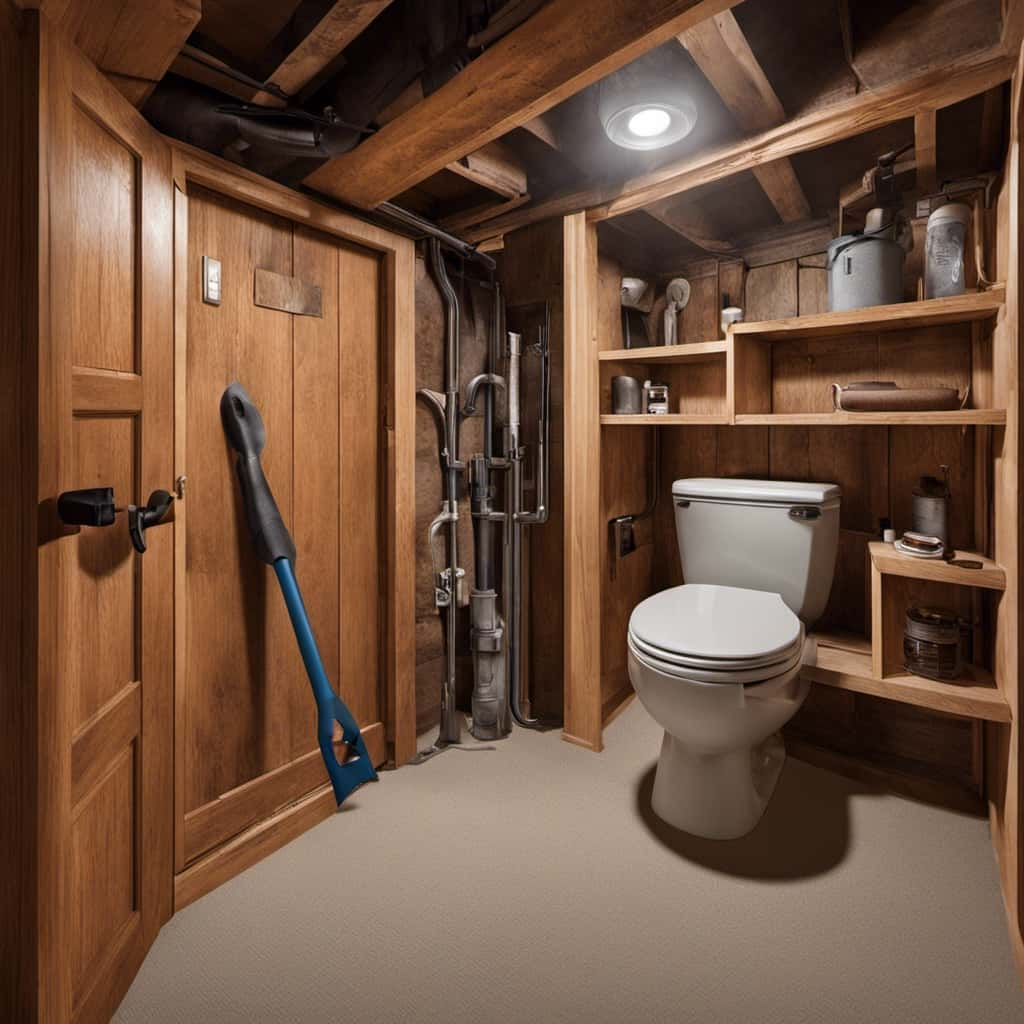
- Water bill reduction: Dual flush toilets give you the option to choose between a low-flush and a high-flush mode, depending on your needs. By using the low-flush mode for liquid waste and the high-flush mode for solid waste, you can significantly reduce your water consumption. This translates to lower water bills over time.
- Environmental savings: By conserving water with a dual flush toilet, you also contribute to water conservation efforts and reduce your carbon footprint. This aligns with the growing demand for sustainable practices and eco-friendly solutions.
- Potential rebates and incentives: In some areas, installing a dual flush toilet may qualify you for rebates or incentives from local utilities or government programs. These financial incentives can help offset the initial cost of the toilet and provide additional savings.
Considering the long-term financial benefits, reduced water bills, environmental impact, and potential incentives, investing in a dual flush toilet is a smart choice for those seeking both cost savings and sustainability.
Ease of Use
Using a dual flush toilet is convenient for us because it allows for easy selection between the low-flush and high-flush modes. This functionality enables us to choose the appropriate flush based on our needs, promoting efficiency in water usage. The ease of use is further enhanced by the intuitive design and user-friendly controls. With just a simple push or pull of a lever, we can select the desired flush mode without any hassle. To illustrate this convenience, we have created a table below:
| Features | Low-Flush Mode | High-Flush Mode |
|---|---|---|
| Water Usage (Gallons) | 0.8-1.1 | 1.6-1.8 |
| Suitable for | Liquid waste, light waste | Solid waste, heavy waste |
As we can see, the dual flush toilet offers a versatile and efficient solution for waste disposal. Its ease of use makes it a practical and worthwhile choice for those seeking a sustainable and user-friendly bathroom fixture.
Environmental Impact
After examining the ease of use of a dual flush toilet, we now turn our attention to its environmental impact. A dual flush toilet can have a significant positive effect on the environment. Here are three key reasons why:
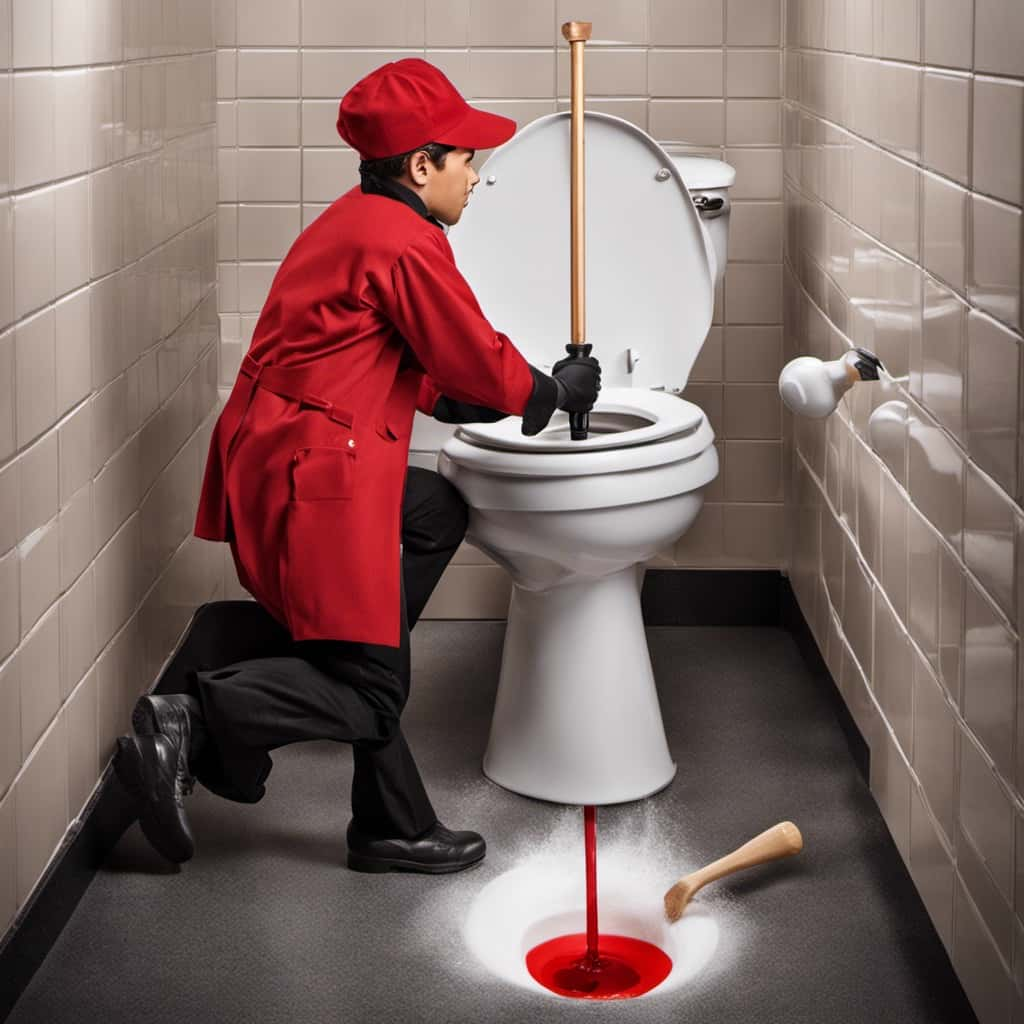
- Water Scarcity: Dual flush toilets are designed to use less water compared to traditional toilets. The option to choose between a full flush for solid waste and a half flush for liquid waste helps conserve water. In areas facing water scarcity, this can make a substantial difference in water usage and conservation efforts.
- Reduced Carbon Footprint: Traditional toilets use more water per flush, which means more energy is required to treat and transport that water. By reducing water usage, dual flush toilets also reduce the carbon emissions associated with water treatment and transportation, thus contributing to a smaller carbon footprint.
- Sustainable Solution: With the increasing awareness of sustainability, dual flush toilets provide an eco-friendly alternative to traditional toilets. Their water-saving capabilities and reduced carbon footprint align with the goals of environmental conservation and responsible resource management.
Maintenance Considerations
Moving on to maintenance considerations, one important aspect to consider when owning a dual flush toilet is its durability. These toilets are designed to be efficient and long-lasting, but regular maintenance is still necessary to ensure their optimal performance.
One of the most important maintenance tips is to regularly clean the toilet bowl and tank to prevent the build-up of mineral deposits and bacteria. This can be done using a mild cleaning solution and a soft brush.
Another potential issue to be aware of is the possibility of leakage. It’s important to check the toilet regularly for any signs of leaks, such as water pooling around the base or continuous running of the flush. If any issues are identified, it’s recommended to contact a professional plumber to address the problem promptly.
Frequently Asked Questions
How Long Does It Take to Install a Dual Flush Toilet?
When considering the installation time of a dual flush toilet, it’s important to note that it varies depending on factors such as the existing plumbing system. Additionally, comparing the cost to traditional toilets can help determine if it’s worth the investment.
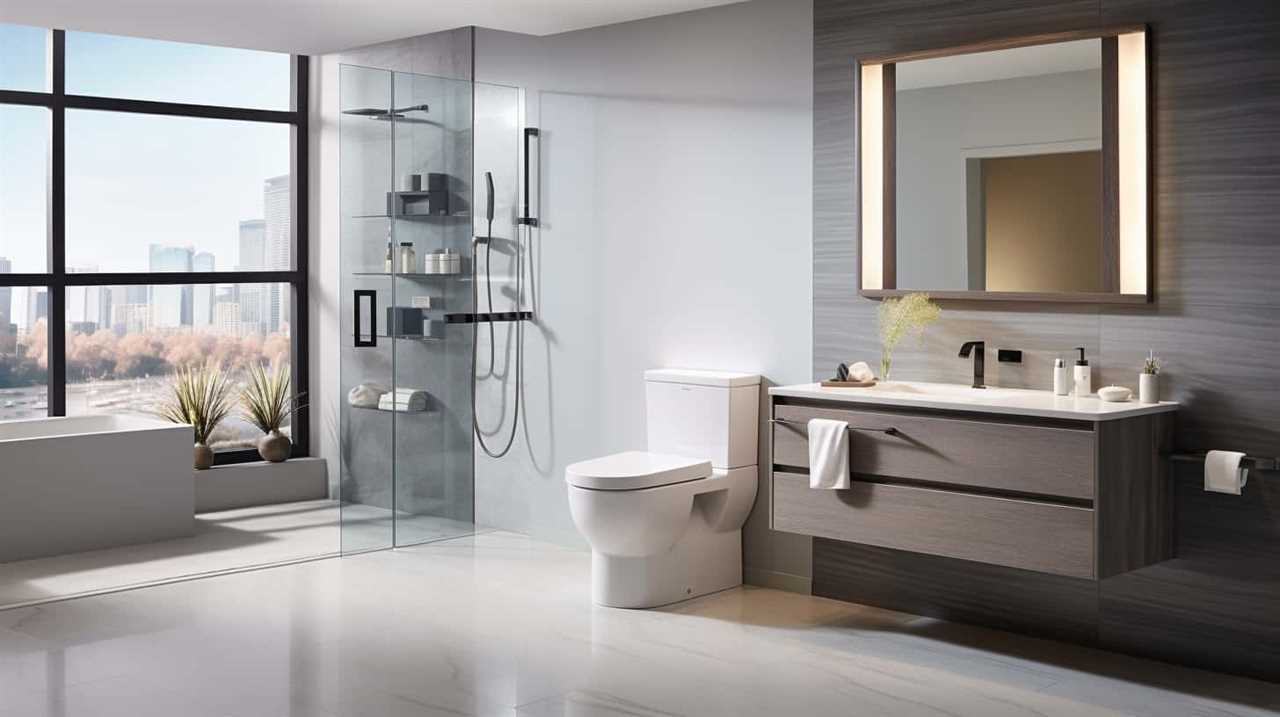
Are Dual Flush Toilets Suitable for All Types of Bathrooms?
When considering the suitability of dual flush toilets for all types of bathrooms, it is important to take into account space limitations and design considerations. These factors play a crucial role in determining the feasibility of installing a dual flush toilet.
Can I Retrofit My Existing Toilet to a Dual Flush System?
Yes, we can retrofit our existing toilet to a dual flush system. It may seem costly at first, but the benefits of water conservation and long-term savings outweigh the initial investment.
Are There Any Specific Plumbing Requirements for Installing a Dual Flush Toilet?
Plumbing considerations for installing a dual flush toilet can vary depending on your existing plumbing setup. It’s important to consult a professional to ensure proper installation and to determine the timeframe required.
Are There Any Health Benefits Associated With Using a Dual Flush Toilet?
Using a dual flush toilet can greatly contribute to water conservation and reduce our environmental impact. While the health benefits may not be significant, the positive impact on our planet is worth considering.
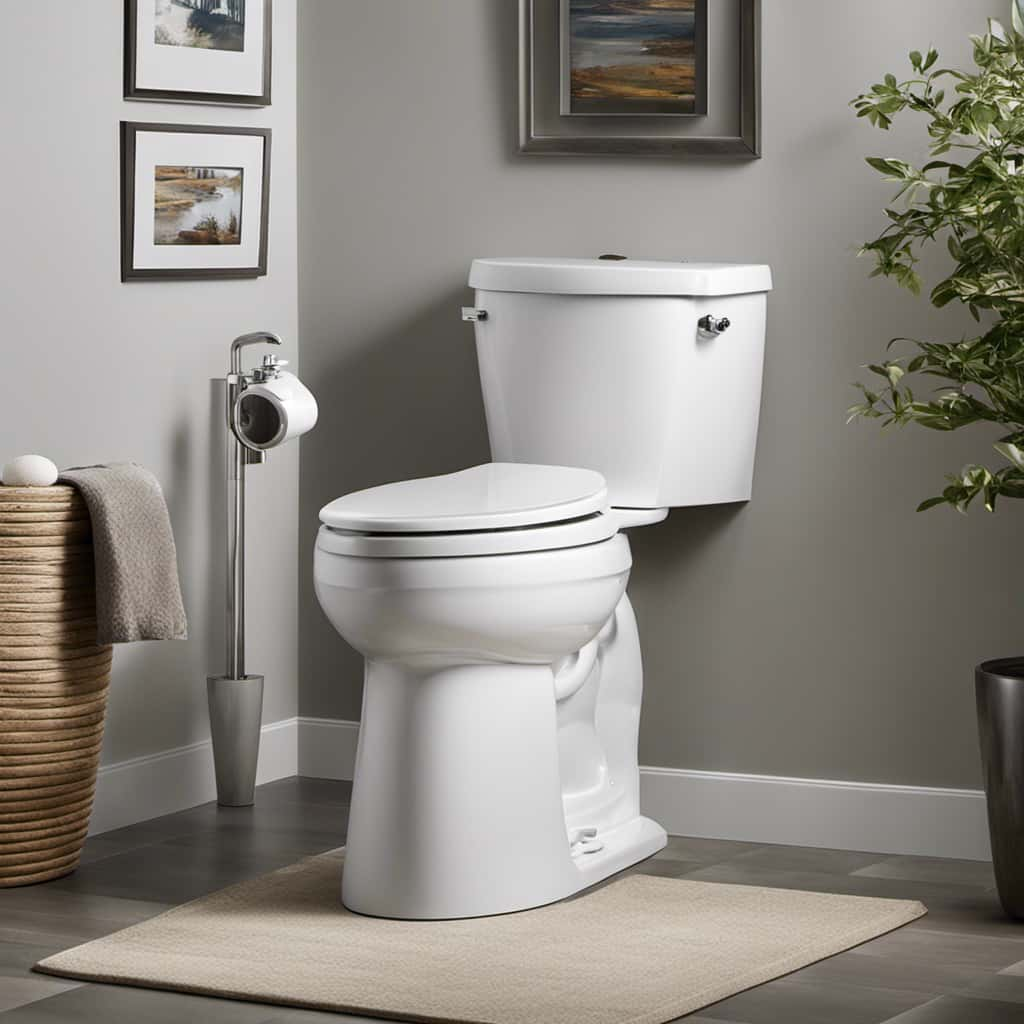
Conclusion
After analyzing the benefits and considerations of getting a dual flush toilet, it’s clear that it’s worth the investment.
Not only does it contribute to water conservation and cost savings, but it also offers convenience and has a positive environmental impact.
With its efficient flushing system, the dual flush toilet ensures an effortless experience while reducing water wastage.
Just like a gentle rain shower, it gently saves water without compromising on functionality.
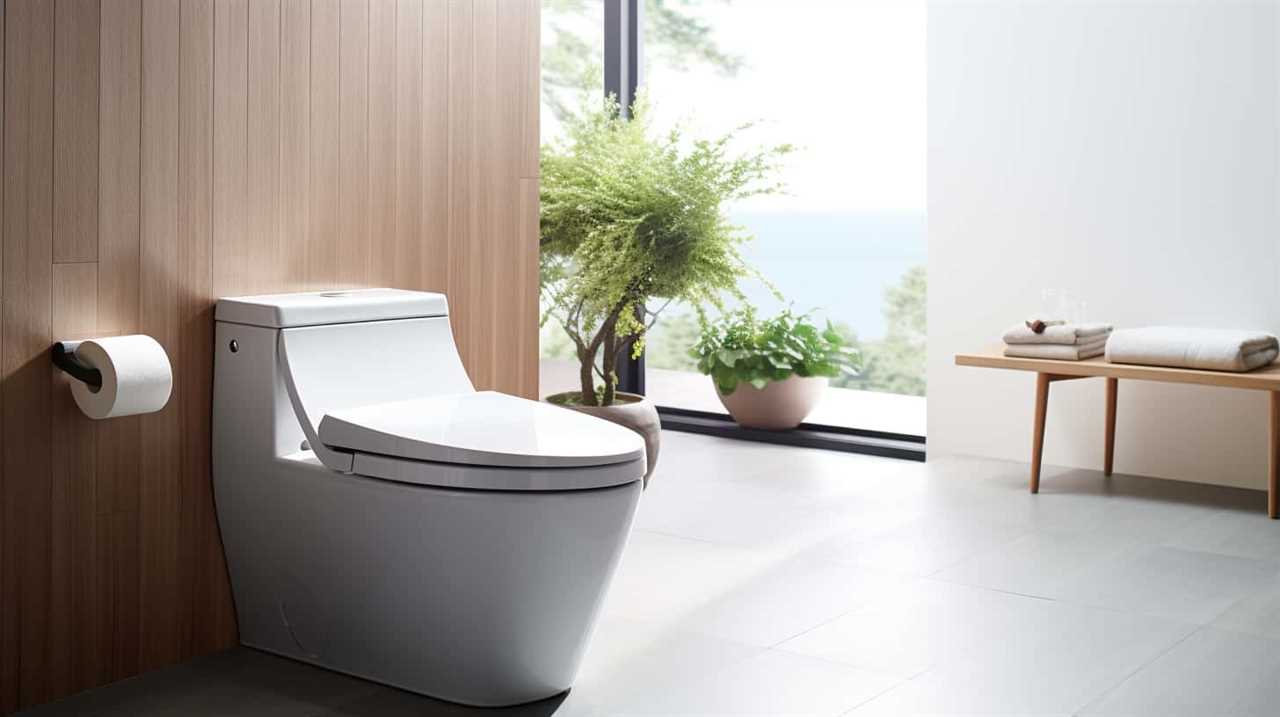
With an impeccable eye for detail and a passion for bathroom-related, Ava leads our editorial team gracefully and precisely.
Under her guidance, Best Modern Toilet has flourished as the go-to resource for modern bathroom enthusiasts. In her free time, you might find Ava exploring antique shops and looking for vintage bathroom fixtures to add to her collection.
FAQ - Advanced Bathroom Queries
What Happens if You Take a Shower While the Water Softener Is Running
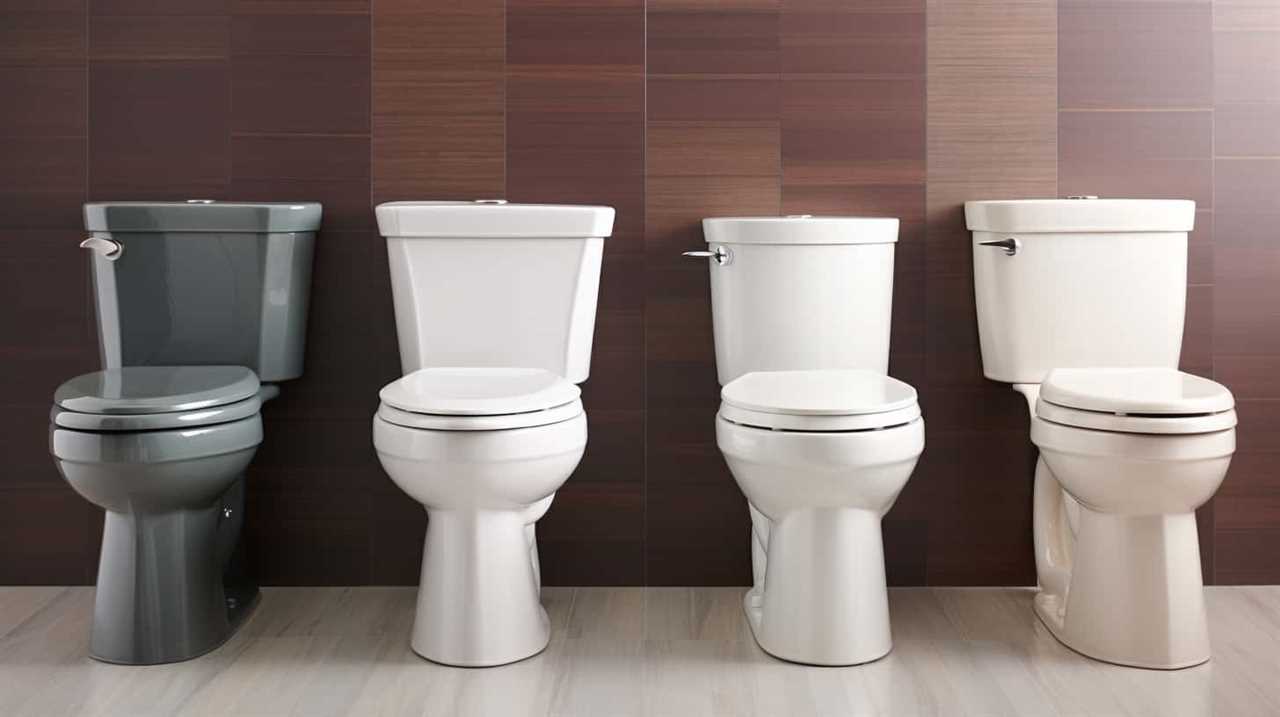
Picture yourself standing beneath a waterfall, its flowing waters bringing a sense of calm and rejuvenation. Now, envision showering with a water softener in use. Just like a symphony of nature, the water gently caresses your skin, leaving it feeling silky smooth.
But what truly happens when the water softener is in action? In this article, we will delve into the potential effects on your skin, hair, soap performance, plumbing, and considerations for sensitive skin.
Let us uncover the mysteries of this shower-time enigma.
Key Takeaways
- Softened water improves skin health by promoting moisture retention, maintaining pH balance, and nourishing the skin for a smoother complexion.
- Softened water prevents mineral buildup on hair, reducing damage, dryness, and dullness, making it easier to comb, style, and manage.
- Soft water allows soap and shampoo to lather and clean more effectively, enhancing the performance of these products and providing a more satisfying shower experience.
- Running the water softener while showering can cause a drop in water pressure, lead to sediment buildup in the water heater, stress plumbing fixtures, and reduce the lifespan of the system, requiring precautions for the longevity and efficiency of the plumbing system.
Potential Effects on Skin
Taking a shower while the water softener is running can significantly improve our skin’s health and appearance. The softened water has a positive impact on our skin by promoting moisture retention and maintaining the proper pH balance.
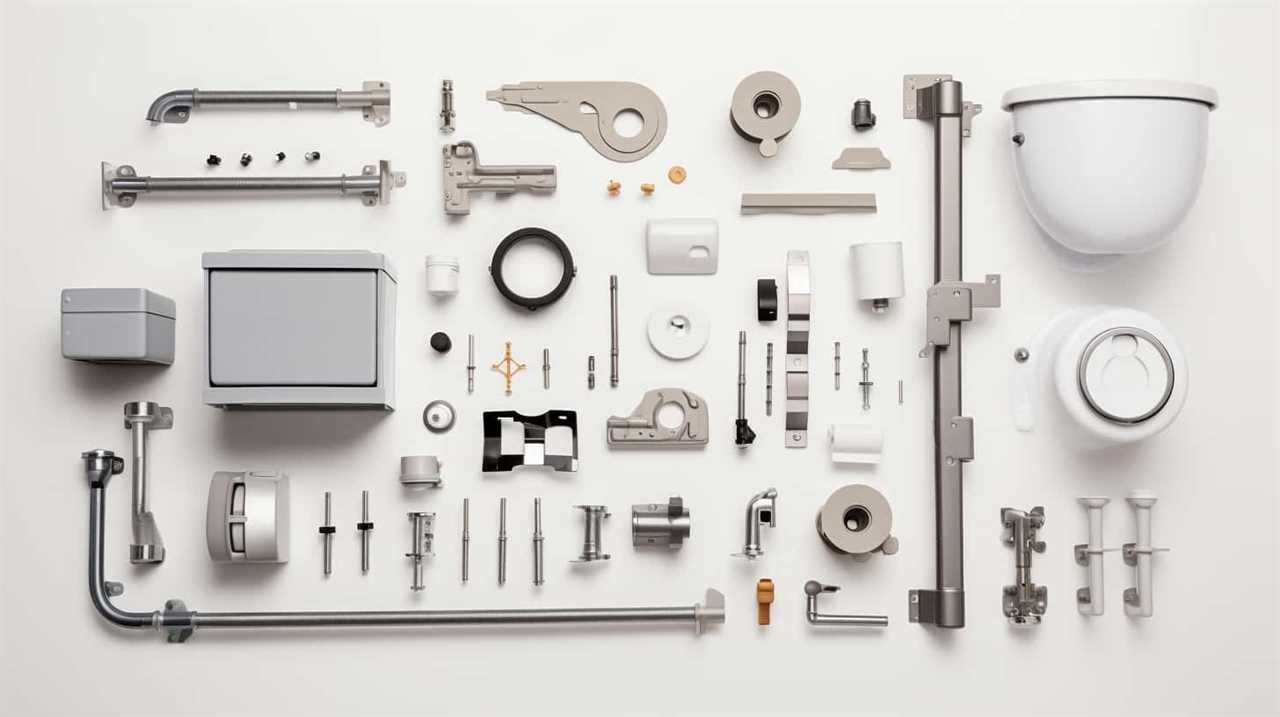
Softened water has lower mineral content, which allows it to better penetrate the skin and hydrate it effectively. This helps to keep our skin nourished and moisturized, leading to a smoother and healthier complexion.
Additionally, the balanced pH level of softened water helps to restore the natural acidity of our skin, which plays a crucial role in protecting it from bacteria and irritants. These combined benefits contribute to improved skin health and a more radiant appearance.
Now, let’s explore how the water softener’s operation can impact our hair health.
Impact on Hair Health
Softened water not only benefits our skin, but it also has a positive impact on our hair health. When we shower with water from a water softener, we can experience the following benefits:
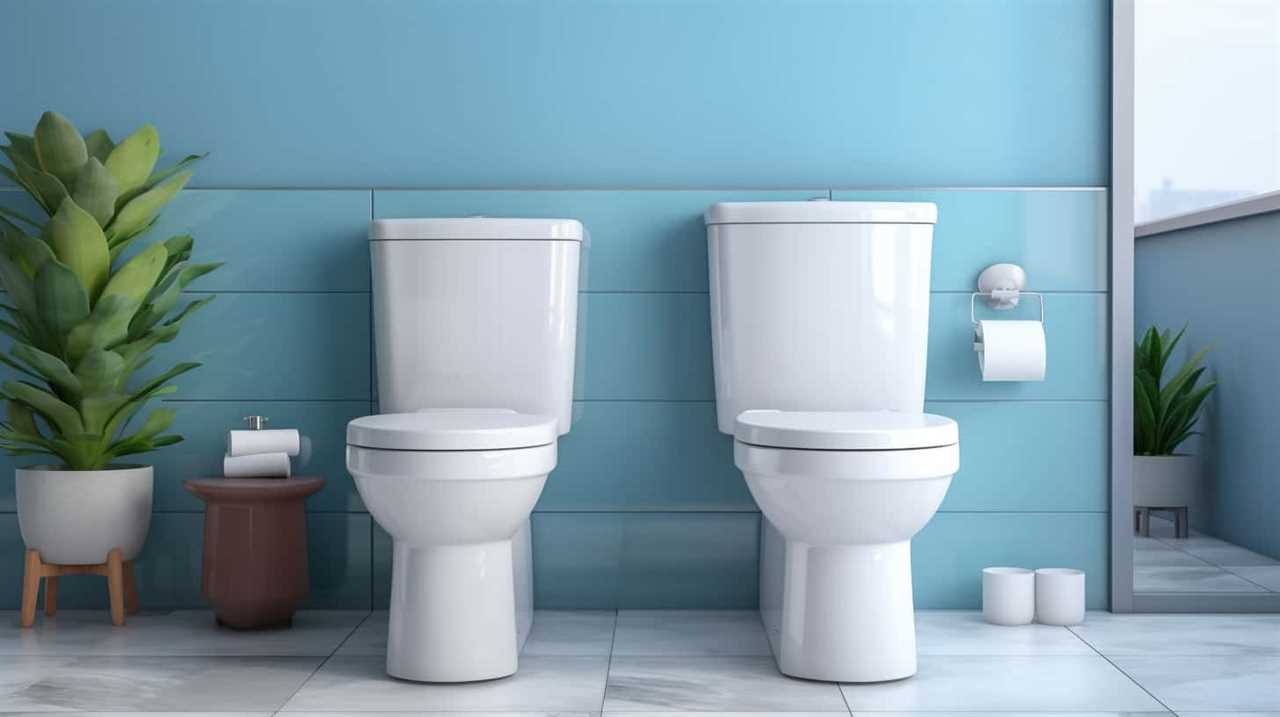
- Reduced hair damage: Softened water helps to prevent the buildup of minerals and chemicals on our hair, which can lead to dryness, breakage, and dullness.
- Increased manageability: With softened water, our hair becomes easier to comb and style. It becomes smoother, shinier, and more manageable overall.
- Enhanced moisture retention: Soft water allows our hair to better absorb and retain moisture, leaving it hydrated and less prone to dryness and frizz.
- Longer-lasting color: Water softeners can help preserve the vibrancy of color-treated hair by preventing the minerals in hard water from stripping away the color.
By following these hair care tips and using water softened by a water softener, we can maintain healthier and more beautiful hair.
As we move forward, let’s explore the effects of softened water on soap and shampoo performance.
Effects on Soap and Shampoo Performance
We noticed a remarkable improvement in how our soap and shampoo performed when using water softened by a water softener. This is because hard water, which contains high levels of minerals such as calcium and magnesium, can interfere with the effectiveness of soaps and shampoos. When hard water is used, it forms a film on the skin and hair, making it difficult for soap and shampoo to lather and clean properly.
Soft water, on the other hand, doesn’t contain these minerals and allows soap and shampoo to work more effectively. The benefits of water softeners in enhancing soap and shampoo performance include increased lathering, improved cleaning ability, and better rinsing. With soft water, you can enjoy a more satisfying and effective shower experience.
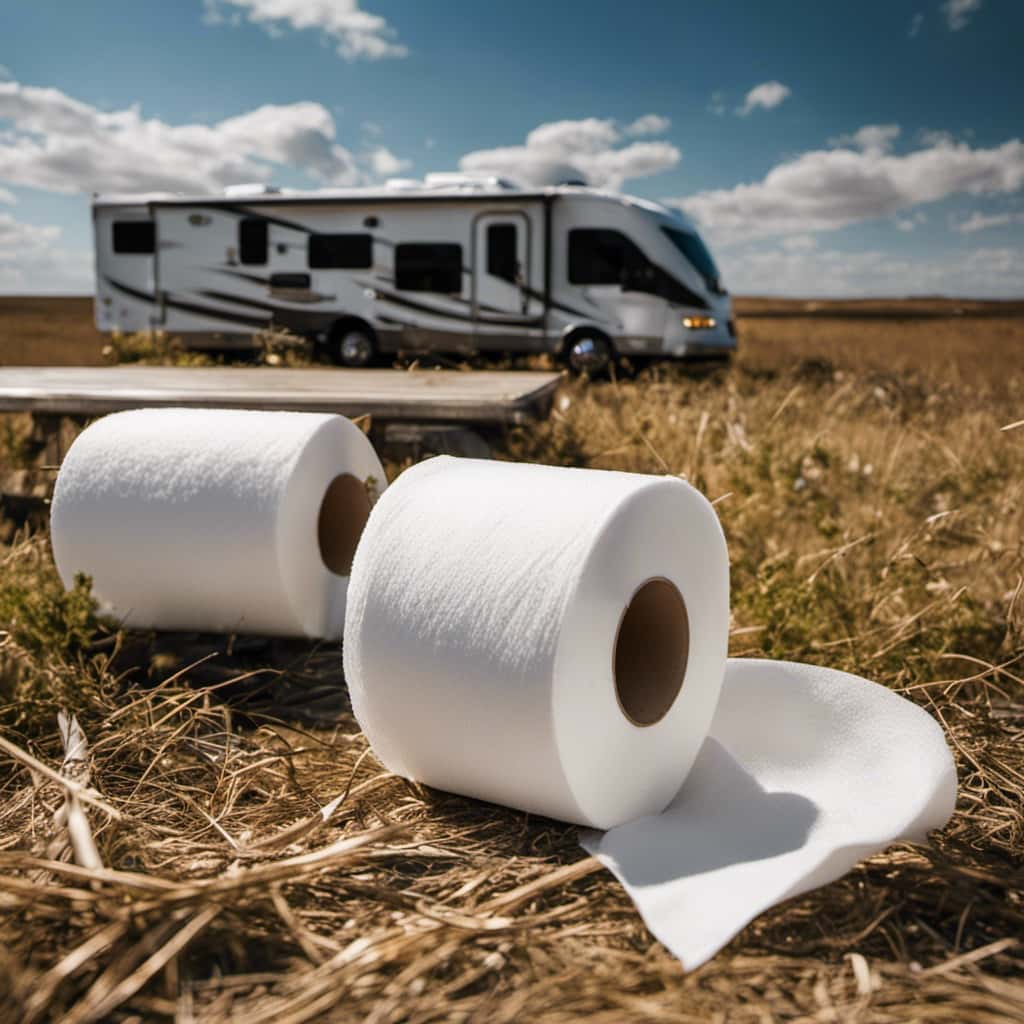
Moving on to potential plumbing issues…
Potential Plumbing Issues
To avoid any potential plumbing issues, it’s important to ensure that the water softener isn’t running while taking a shower. Here are some reasons why:
- Potential water pressure problems: Running the water softener while taking a shower can cause a drop in water pressure. This can result in a weak and unsatisfying shower experience.
- Impact on water heater efficiency: The water softener adds salt to the water to remove minerals, which can lead to a buildup of sediment in the water heater. This sediment can reduce the efficiency of the water heater and increase energy consumption.
- Increased wear and tear on plumbing fixtures: The constant flow of soft water can put additional stress on plumbing fixtures, such as faucets and showerheads. This can lead to leaks and other plumbing problems over time.
- Potential damage to the water softener: Running the water softener while taking a shower can put unnecessary strain on the system, potentially causing damage and reducing its lifespan.
Considering these potential plumbing issues, it’s crucial to take precautions when using the water softener to ensure the longevity and efficiency of your plumbing system.
Now, let’s move on to the next section where we’ll discuss considerations for sensitive skin.
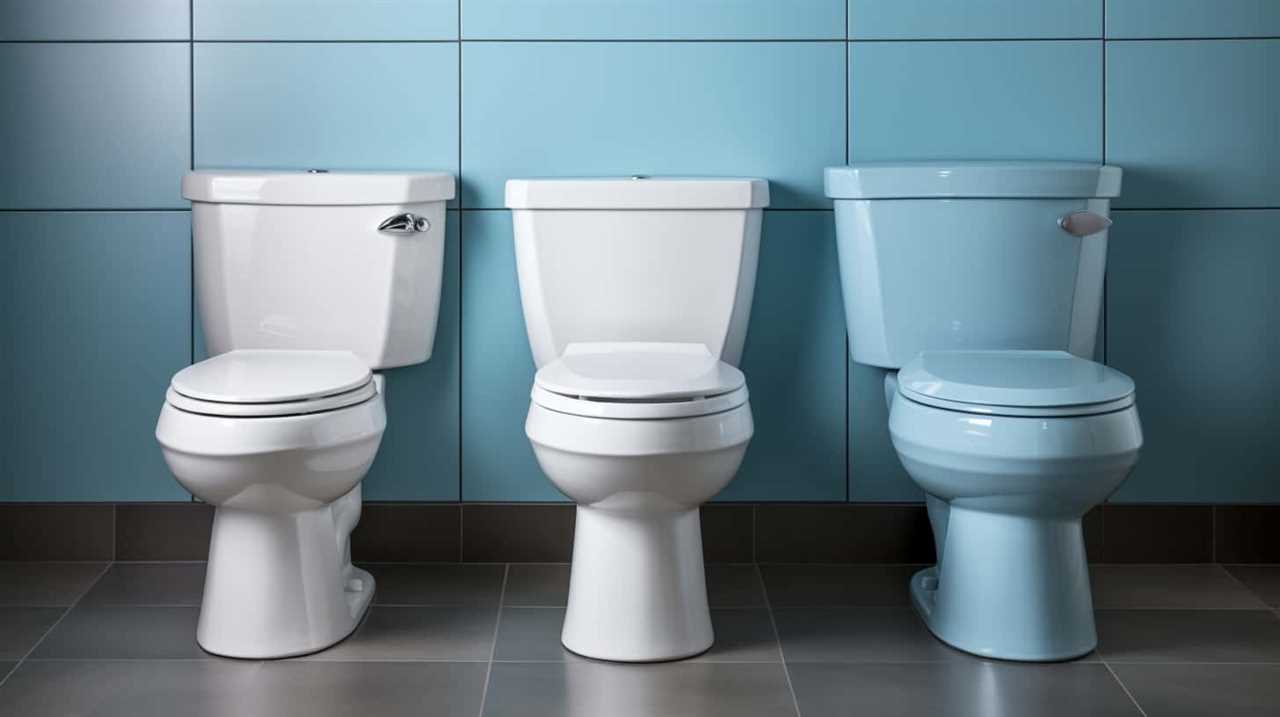
Considerations for Sensitive Skin
Our sensitive skin’s needs should be taken into account when using a water softener. Sensitive skin requires special care to prevent irritation and dryness. When using a water softener, it’s important to pay attention to the shower temperature as it can have a significant impact on the skin.
Hot water can strip the skin of its natural oils, leading to dryness and irritation. It’s recommended to use lukewarm water instead, as it’s gentler on sensitive skin. Additionally, it’s advisable to limit the duration of showers to avoid prolonged exposure to water and potential skin damage.
Frequently Asked Questions
Can Showering With the Water Softener Running Cause Any Damage to My Plumbing System?
Showering with the water softener running can potentially affect water pressure and reduce water heater efficiency. It’s important to be mindful of these potential effects to ensure proper functioning of your plumbing system.
Will Using Soap and Shampoo Be Less Effective if I Shower With the Water Softener Running?
Using a water softener while showering may reduce water pressure but won’t affect the effectiveness of soap and shampoo. However, consider the environmental implications of running the water softener during showers.
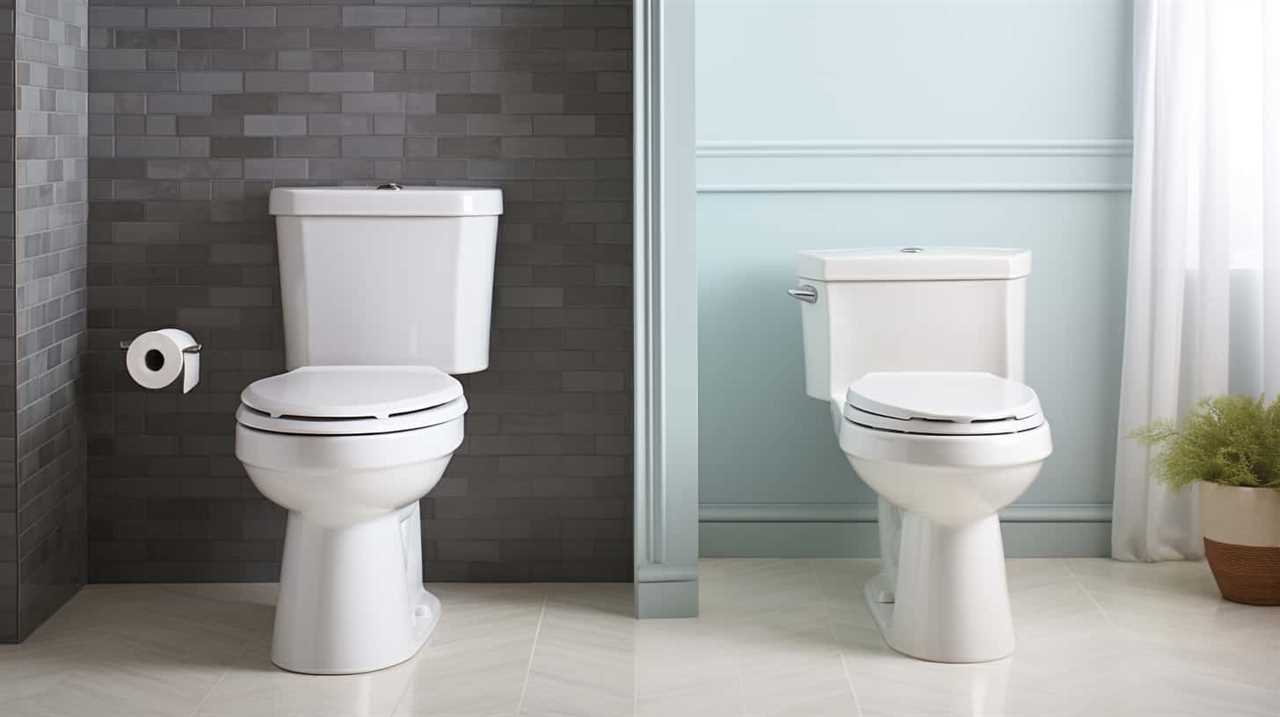
What Are the Potential Effects of Showering With the Water Softener Running on My Sensitive Skin?
Showering with the water softener running may have adverse effects on our sensitive skin. The softened water can strip away natural oils, leading to dryness and irritation. It may also impact the effectiveness of soap and shampoo on our hair.
Can Showering With the Water Softener Running Lead to Any Hair-Related Problems, Such as Dryness or Brittleness?
Showering with the water softener running won’t cause hair dryness or brittleness. However, it’s important to regularly maintain the water softener for optimal hair care.
Are There Any Specific Plumbing Issues That May Arise From Using a Water Softener While Taking a Shower?
Taking a shower while the water softener is running can potentially impact the plumbing system. It may lead to increased maintenance requirements due to the additional strain on the system from the continuous flow of water.
Conclusion
In conclusion, taking a shower while the water softener is running can have various effects on your skin, hair, and overall shower experience.
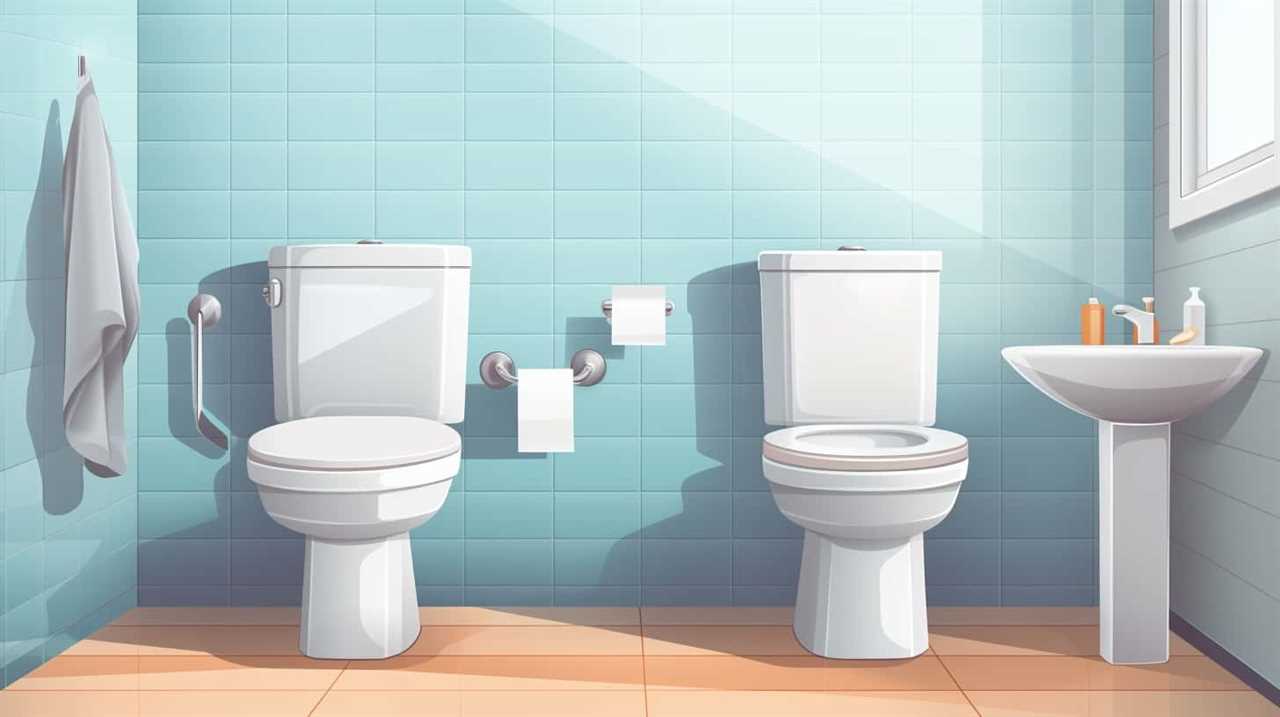
It may leave your skin feeling smoother and your hair healthier.
Soap and shampoo may lather better, giving you a more satisfying clean.
However, it’s important to consider potential plumbing issues that may arise.
If you have sensitive skin, it’s crucial to take extra precautions and consult a professional.
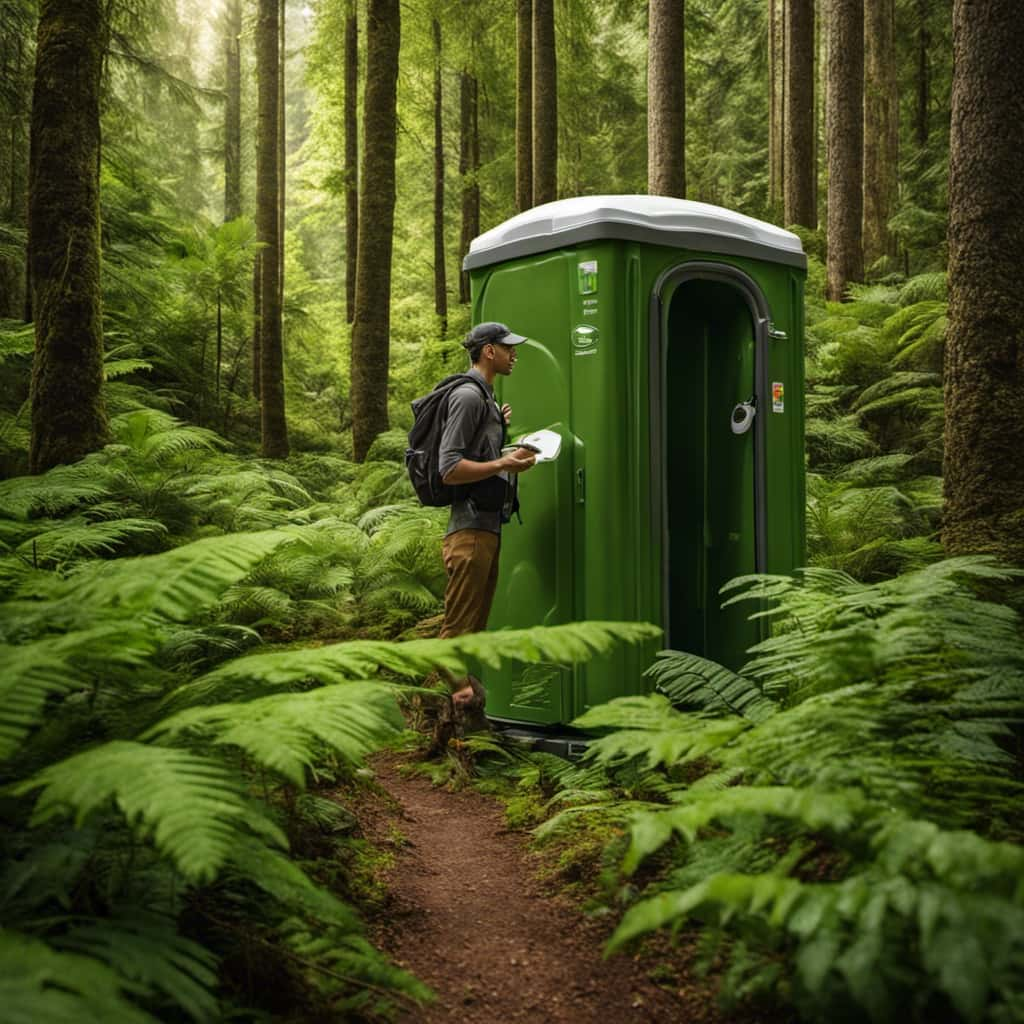
So, before hopping into the shower, make sure the water softener is set just right for a truly refreshing experience.
With an impeccable eye for detail and a passion for bathroom-related, Ava leads our editorial team gracefully and precisely.
Under her guidance, Best Modern Toilet has flourished as the go-to resource for modern bathroom enthusiasts. In her free time, you might find Ava exploring antique shops and looking for vintage bathroom fixtures to add to her collection.
-

 FAQ - Advanced Bathroom Queries3 months ago
FAQ - Advanced Bathroom Queries3 months agoWhat Happens if You Sit on the Toilet Too Long
-
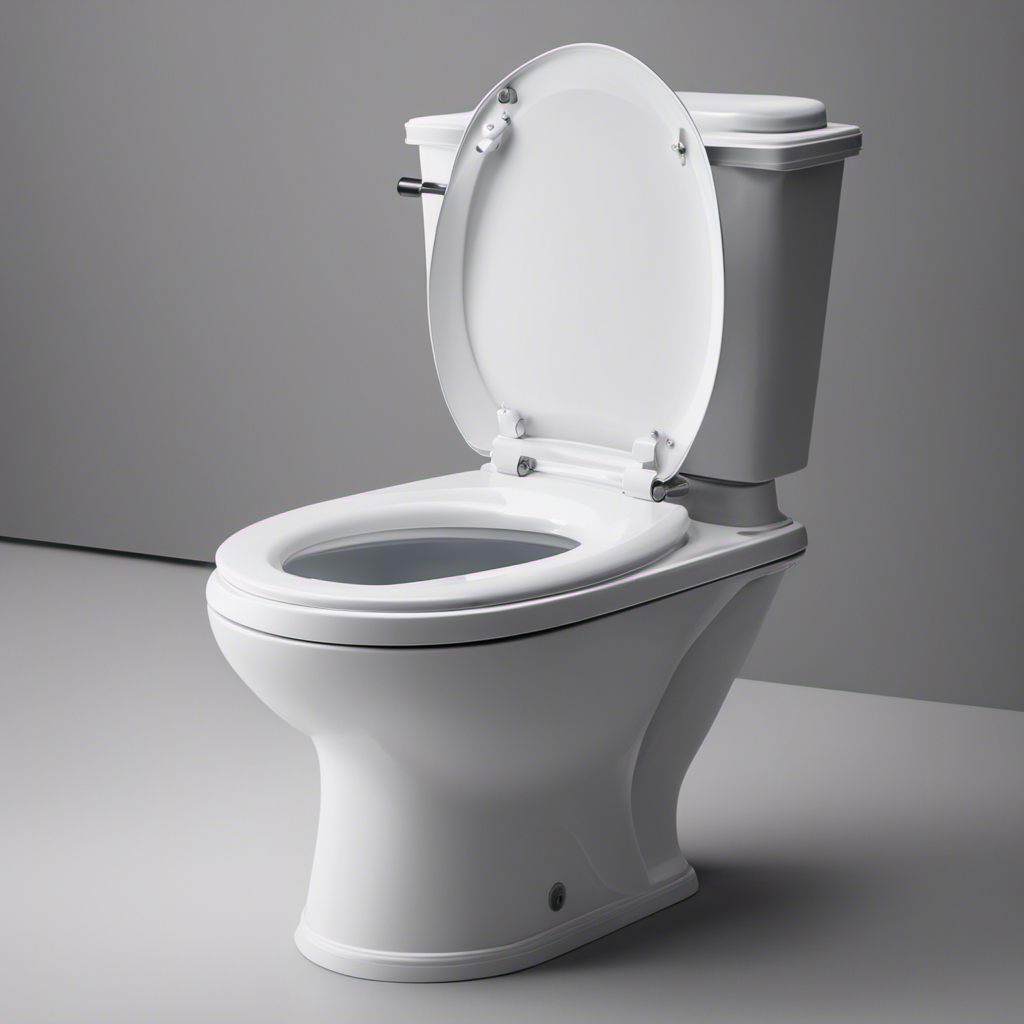
 FAQ - Advanced Bathroom Queries3 months ago
FAQ - Advanced Bathroom Queries3 months agoWhy Is My Toilet so Loud When Refilling
-
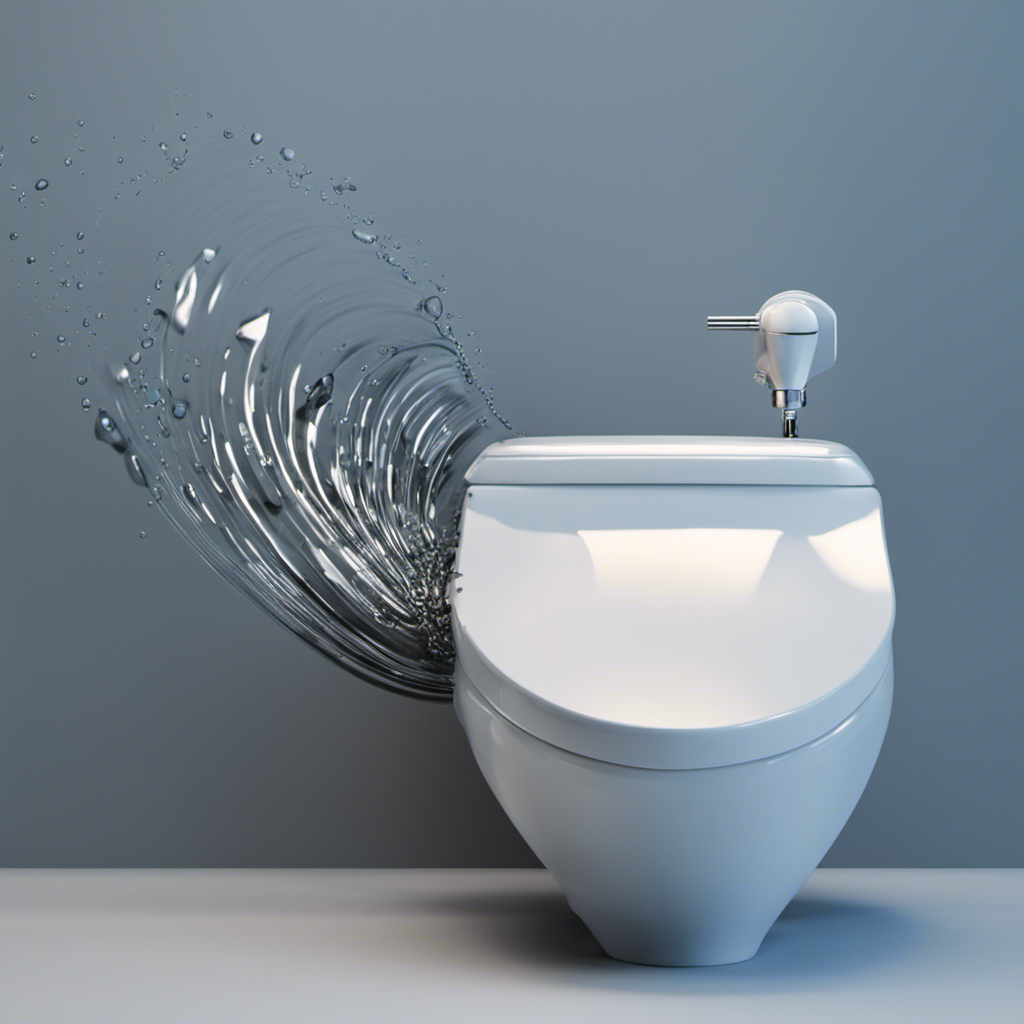
 Guides3 months ago
Guides3 months agoTroubleshooting Dropping Water Level in Toilet Bowl: Causes and Solutions
-

 Toilet Brands3 months ago
Toilet Brands3 months agoCountries Where You Can’t Flush Toilet Paper
-
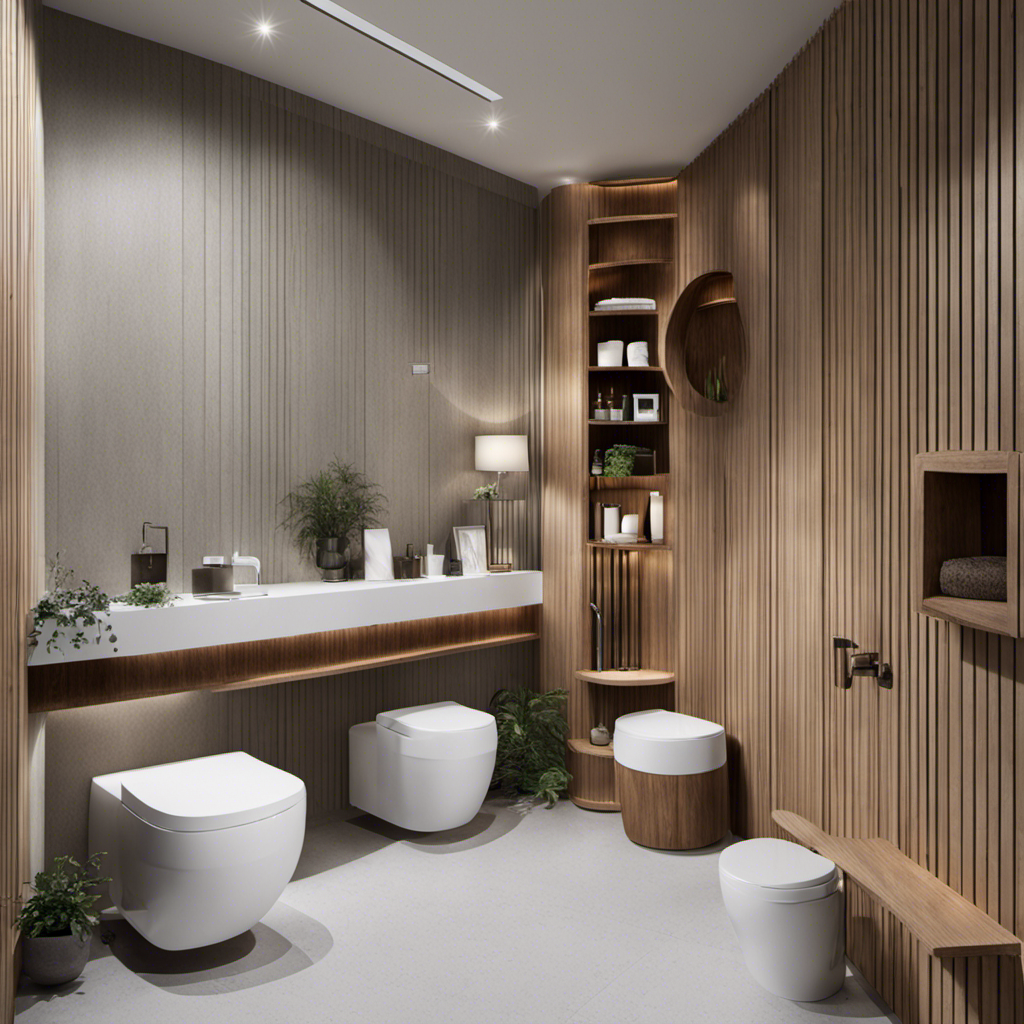
 Guides3 months ago
Guides3 months agoChoosing the Right Toilet Flange: A Comprehensive Guide
-
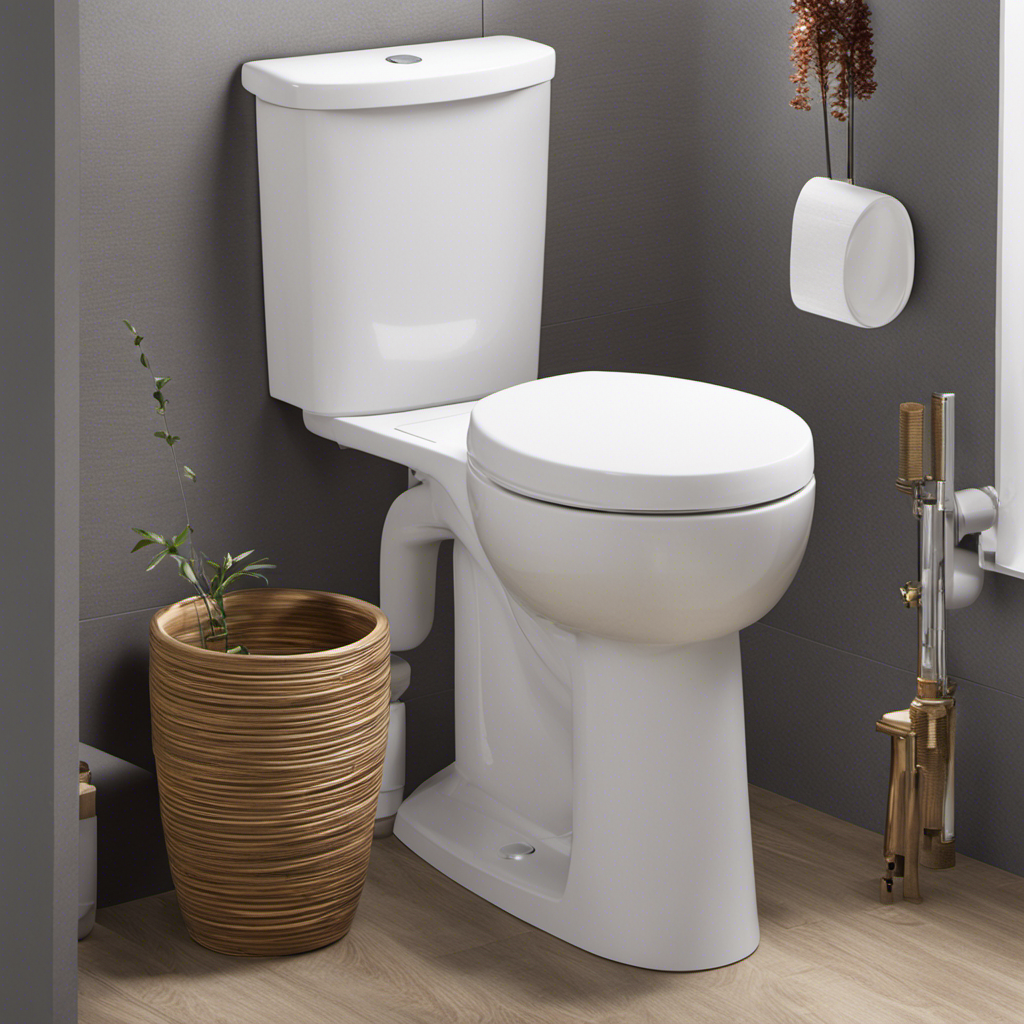
 Guides3 months ago
Guides3 months agoToilet Water Supply Line Sizes: Finding the Right Fit
-

 FAQ - Advanced Bathroom Queries3 months ago
FAQ - Advanced Bathroom Queries3 months agoWhat Happens When You Put Baking Soda in Your Toilet
-
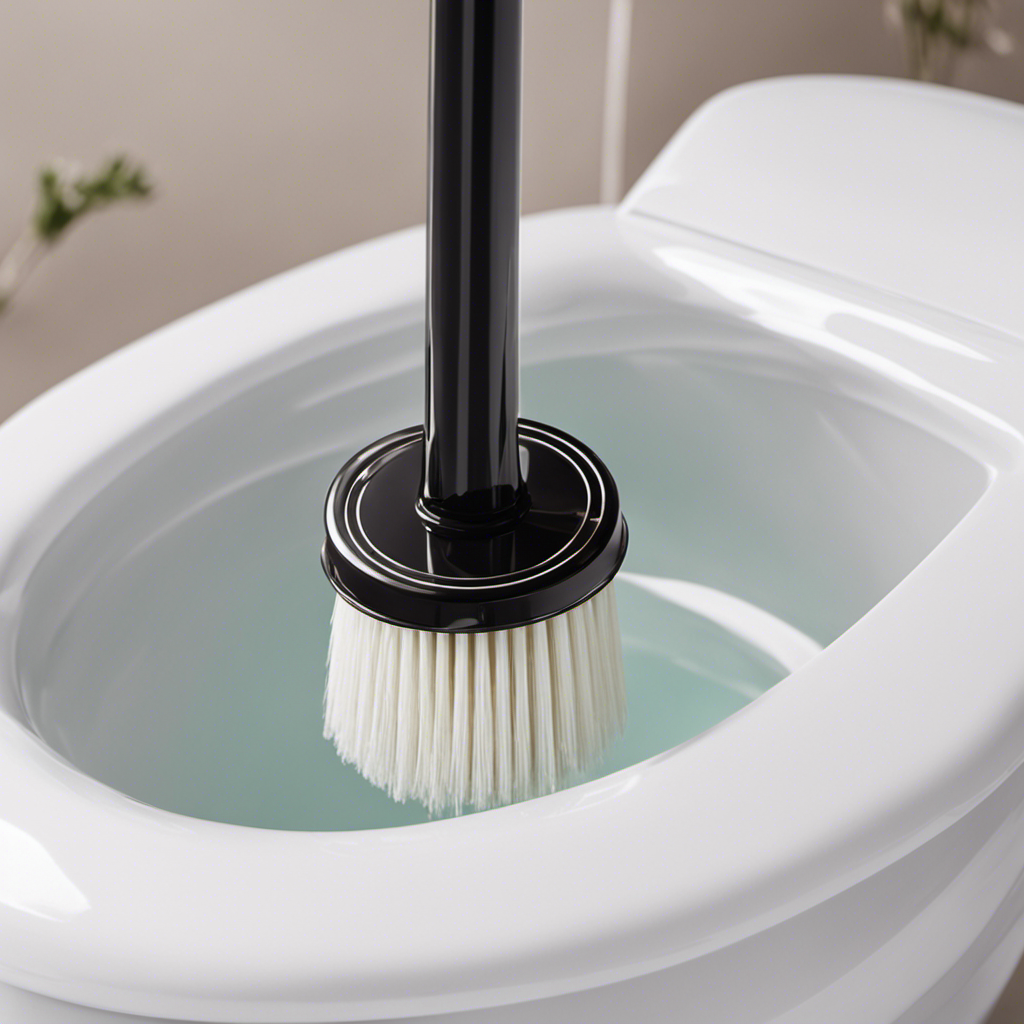
 Guides3 months ago
Guides3 months agoHow to Remove Crystallized Urine From Toilet Bowl





















